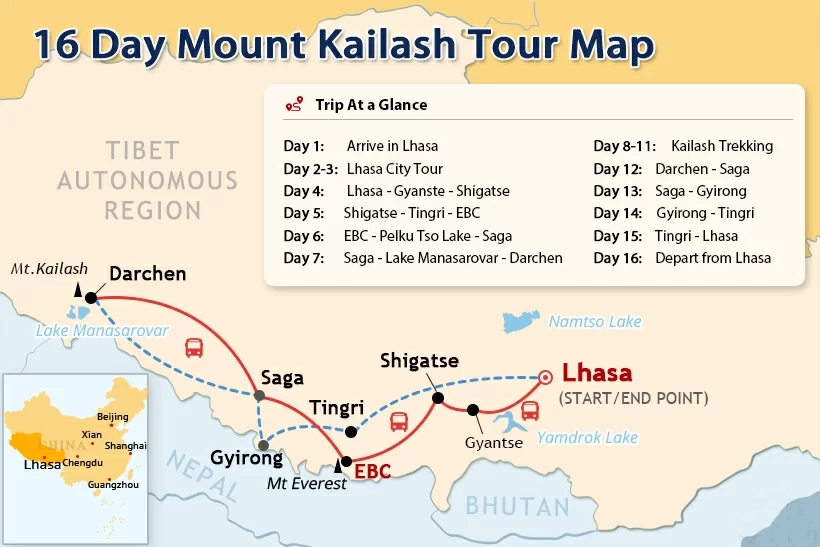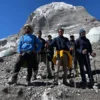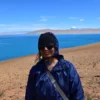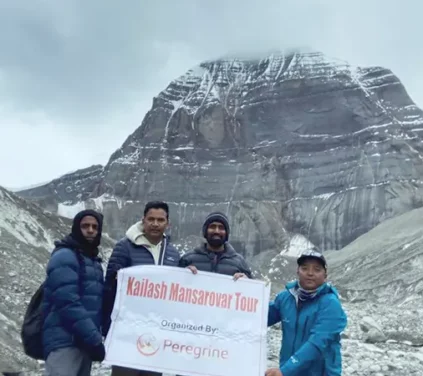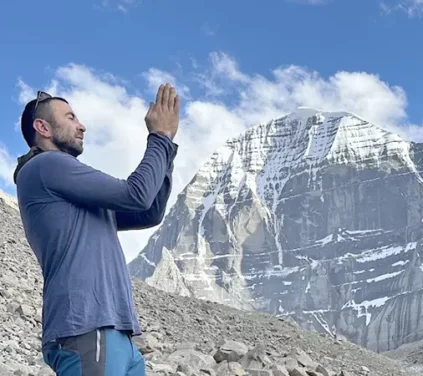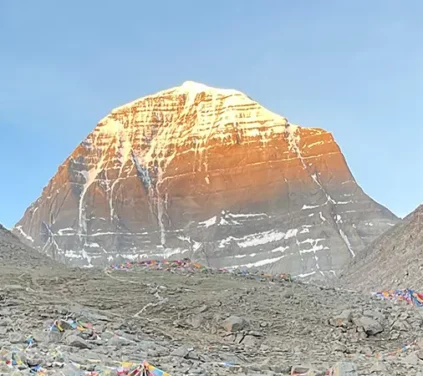Based on 11 reviews
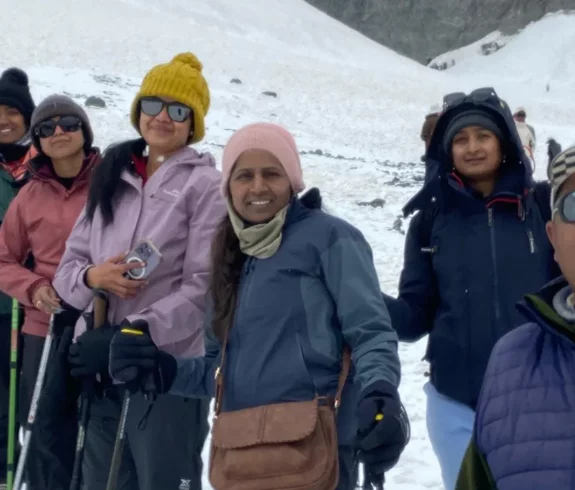
Mount Kailash Trip from Lhasa
Lhasa, EBC, Lake Mansarovar, and Charan Sparsh with Kora included
Duration
Meals
- 12 Breakfast
- 1 Lunch
- 1 Dinner
Accommodation
- Hotel
- Guest House
Activities
- Sightseeing
- Hiking
- Scenic Drive
SAVE
€ 478Price Starts From
€ 2390
Overview of Mount Kailash Trip from Lhasa
Planning a Mount Kailash trip promises an extraordinary blend of adventure, spirituality, and natural beauty. This 15-day expedition offers travelers an immersive experience of Tibet’s rich culture and breathtaking landscapes. From the ancient monasteries of Lhasa to the sacred peaks of Mount Kailash, this journey is meticulously crafted to provide excitement and enlightenment.
Experience the Heart of Tibetan Culture
The trip begins in Lhasa, the spiritual heart of Tibet. Here, you’ll explore iconic sites like the Potala Palace and Jokhang Temple, delving deep into Tibetan Buddhism. Walking through bustling streets like Barkhor Street, you’ll witness daily traditions and engage with friendly locals. Visiting monasteries such as Drepung and Sera offers insight into monastic life and the chance to witness monks debating age-old philosophies.
Witness Majestic Natural Wonders
As Mount Kailash progresses, the scenery transforms dramatically. Traveling through high mountain passes, you’ll encounter stunning vistas of snow-capped peaks and crystal-clear lakes like Yamdrok Lake. The journey to Everest Base Camp provides an unparalleled opportunity to see the world’s highest mountain up close, with sunsets and sunrises that paint the sky in mesmerizing hues.
Sacred Mount Kailash Trek
The pinnacle of the trip is the challenging yet rewarding trek around Mount Kailash. This sacred mountain holds immense significance for multiple religions, and trekking its circuit is considered a holy undertaking. Over several days, you’ll hike alongside pilgrims, ascending high passes like Dolma La and experiencing profound spiritual moments. The trek offers physical challenges and the chance to connect deeply with the serene surroundings.
Rejuvenate at Lake Manasarovar and Beyond
After completing the trek, relaxation awaits at Lake Manasarovar. Touching its sacred waters and optionally soaking in nearby hot springs provides a rejuvenating experience. The return journey takes you through diverse landscapes, from the Gyirong Valley’s lush forests to the Himalayas’ highlands. Each stop enriches the Mount Kailash Trip, offering new perspectives and lasting memories.
Practical Advice for Travelers
- Acclimate Properly: High altitudes can be challenging. Spend the initial days acclimating in Lhasa to ensure a comfortable trip.
- Prepare Physically: The trek requires good fitness levels. Regular exercise before the trip enhances the experience.
- Respect Local Customs: Engage with local traditions respectfully.
- Pack Wisely: Layered clothing is essential due to varying temperatures. Remember essentials like sunscreen and a good pair of trekking boots.
This 15-day Mount Kailash Trip is more than just a vacation; it’s a transformative journey that combines cultural immersion, spiritual exploration, and the awe-inspiring beauty of nature. Careful planning and an open mind will ensure that you see Tibet and truly experience all this remarkable region has to offer.
Detail Itinerary of Mount Kailash Trip from Lhasa
Day 1: Arrival in Lhasa
Arriving in Lhasa marks the beginning of your Mount Kailash Trip. Whether you travel by train or flight, a warm Tibetan welcome awaits. Your local guide greets you with a traditional Hada, a ceremonial scarf symbolizing purity and goodwill.
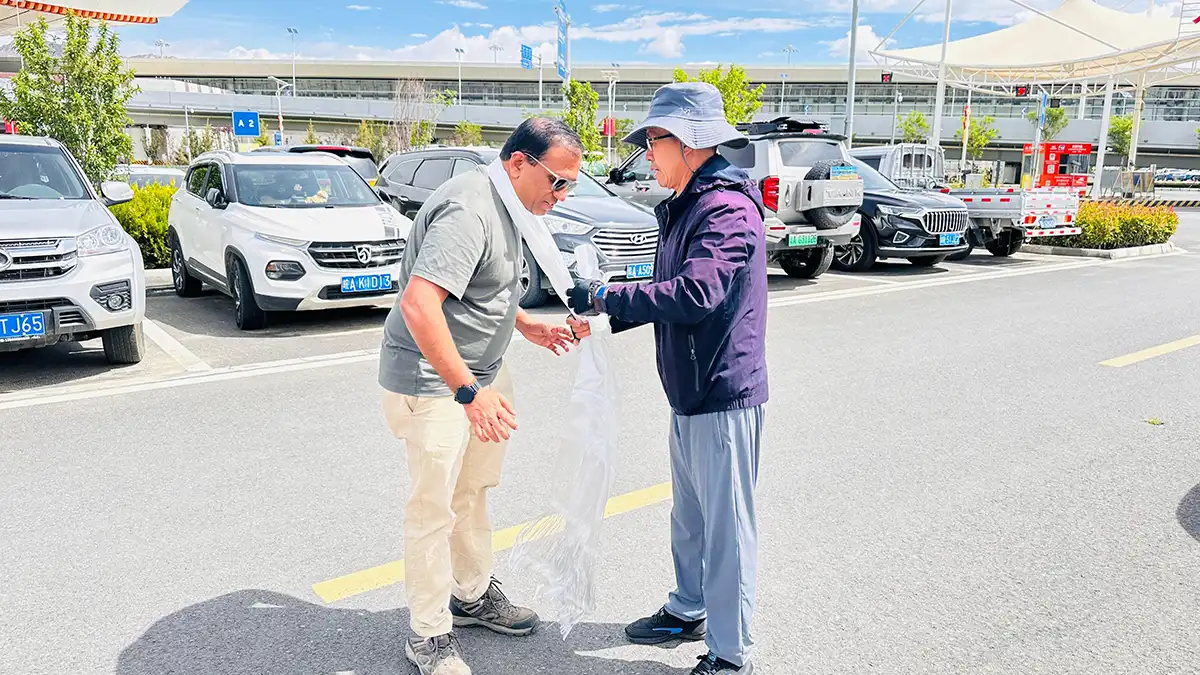
You will drive to your hotel in Lhasa. Along the way, enjoy breathtaking views of the Yarlung Tsangpo River, Tibet’s longest river, and the picturesque Lhasa River. These scenic landscapes offer a glimpse into the natural beauty you’ll experience throughout your Mount Kailash Trip.
Upon arrival at your hotel, it’s essential to rest and acclimate to the high altitude. Lhasa sits at 3,650 meters (11,975 feet) above sea level. Taking it easy on your first day helps prevent altitude sickness and ensures you feel your best for the adventures ahead.
The guide will meet you in the afternoon or evening to present traditional Tibetan gifts. This is also an opportunity to receive essential travel instructions and meet fellow travelers who will join you on the Mount Kailash Trip. Building connections early enhances the shared experience.
Spending the night in Lhasa allows you to adjust to the environment while soaking in the city’s unique atmosphere. Consider a gentle stroll near your hotel to familiarize yourself with the surroundings, but avoid strenuous activities on your first day.
The first day of your Mount Kailash Trip is all about settling in and preparing for future experiences. The following days will be filled with exploration and cultural discoveries. Rest well, and get ready for an unforgettable time in Tibet.
Elevation: 3600m
Accommodation: Hotel Yak or similar
Meal: Not Included
Day 2: Lhasa Tour - Drepung Monastery and Sera Monastery (D)
Highlights:
- Visit Drepung Monastery, Tibet’s largest monastery.
- Experience the daily life of Tibetan monks.
- Witness the famous Tibetan Monks Debate at Sera Monastery.
- Enjoy a welcome dinner with fellow travelers.
On the second day of your Mount Kailash Trip, the focus shifts to the spiritual heart of Tibet. The day is dedicated to immersing yourself in the rich traditions of Tibetan Buddhism by visiting two of its most significant monasteries: Drepung and Sera.
Morning Visit to Drepung Monastery
The day begins with a trip to Drepung Monastery, once home to over 10,000 monks and one of the largest monasteries in the world. As you approach, the sprawling white structures nestled against the hillside create a breathtaking sight.
Inside the monastery, explore Coqen Hall, where your guide will share insights into the foundations of Tibetan Buddhism. Learn about important figures in Tibetan Buddhist history and the monastery’s role in preserving religious teachings. The intricate murals and statues offer a glimpse into centuries-old artistic traditions.
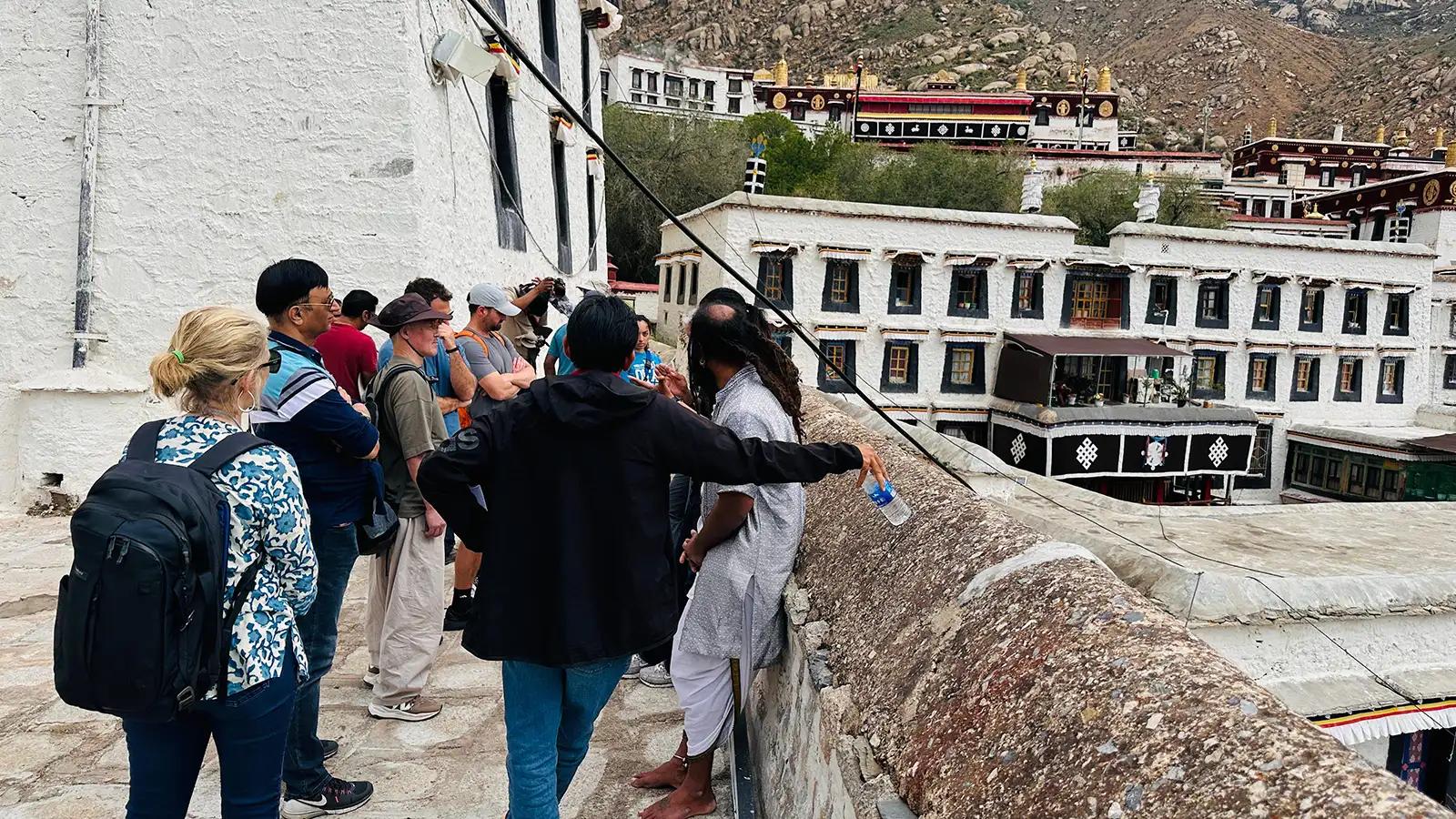
Insight into Monastic Life
Next, visit Loseling College or a similar institution within the monastery complex. Here, you get an up-close look at the study environment of Tibetan monks. Touring the dormitories reveals the simplicity and discipline of monastic life. This experience provides a deeper understanding of the commitment to pursuing spiritual enlightenment.
Afternoon at Sera Monastery
After a leisurely lunch, the adventure continues at Sera Monastery, one of Tibet’s “great three” Gelug monasteries. The monastery is renowned for its vibrant debating traditions, which are critical to the monks’ education.
Witness the Tibetan Monk’s Debate
From 3 – 5 p.m., Monday to Saturday, the monastery’s courtyards come alive with animated discussions. Monks engage in philosophical debates, using expressive gestures to challenge and refine each other’s understanding of Buddhist teachings. Your guide will explain the structure and significance of these debates, enhancing your appreciation of this unique practice.
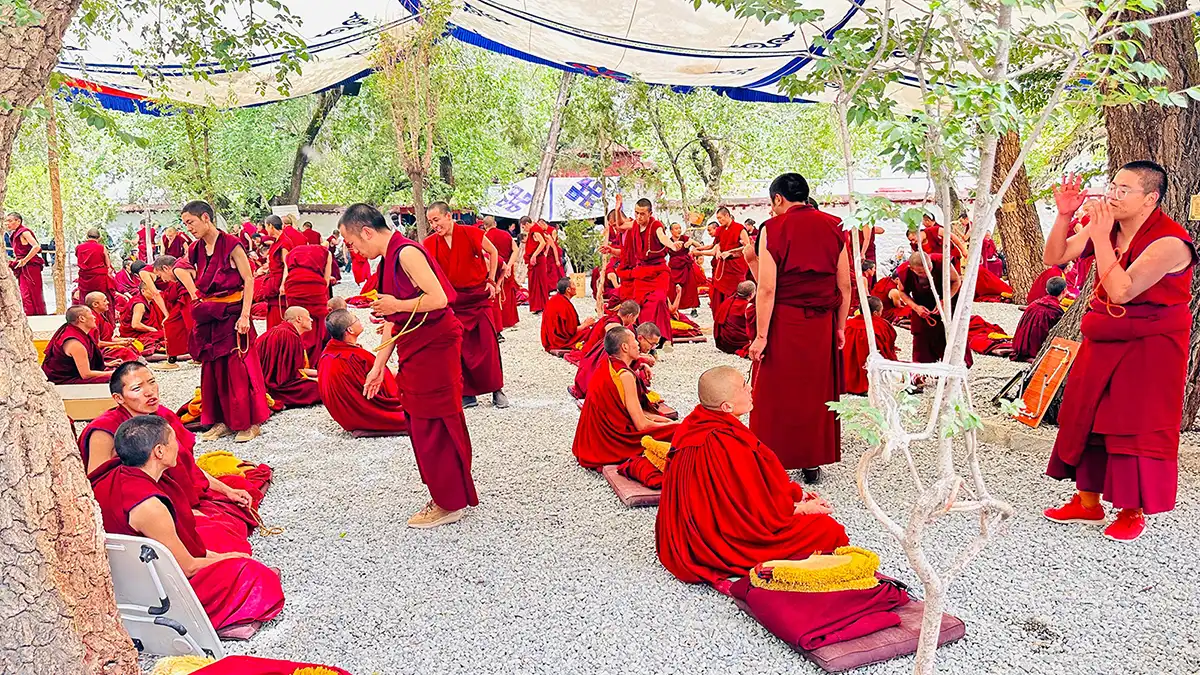
Tibet. This centuries-old tradition is a cornerstone of Tibetan Buddhist education, fostering critical thinking and a deep understanding of Buddhist philosophy.
Evening Welcome Dinner
After a day steeped in spiritual exploration, enjoy a welcome dinner with your fellow travelers. This is an excellent opportunity to share impressions of the day’s experiences and build connections to enhance the rest of your Mount Kailash Trip.
Tips for the Day:
- Wear comfortable walking shoes, as both monasteries involve walking on uneven surfaces.
- Respect monastic rules: ask for permission before photographing, especially inside temples.
- Hydrate adequately to adjust to Lhasa’s high altitude.
Spending the day at Drepung and Sera Monasteries offers profound insights into Tibetan culture and religion. It’s a memorable part of the Mount Kailash Trip, setting the stage for the spiritual journey ahead.
Elevation: 3600m
Accommodation: Hotel Yak or similar
Meal: Breakfast
Day 3: Exploring Potala Palace, Jokhang Temple, and Barkhor Street in Lhasa
Highlights:
- Visit the iconic Potala Palace
- Explore Jokhang Temple, the spiritual heart of Tibet
- Stroll through the vibrant Barkhor Street
- Experience local life at a Tibetan tea house
On the third day of your Mount Kailash Trip, Soak up the rich cultural tapestry of Lhasa. The day is packed with visits to UNESCO World Heritage Sites and offers a deep dive into the traditions and daily lives of the Tibetan people.
Morning at the Potala Palace
Begin the day with a hearty breakfast before heading to the majestic Potala Palace. Standing tall atop Marpo Ri Hill, the palace offers panoramic views over Lhasa’s Old Town. As you ascend the steps, feel the weight of history beneath your feet.
Inside, wander through halls adorned with intricate murals and ancient artifacts. Learn about the lives and legacies of past Dalai Lamas, and marvel at the gilded burial stupas that honor them. Take advantage of the meditation cave of Tibet’s 33rd great king, a sacred space that adds depth to the palace’s spiritual ambiance.
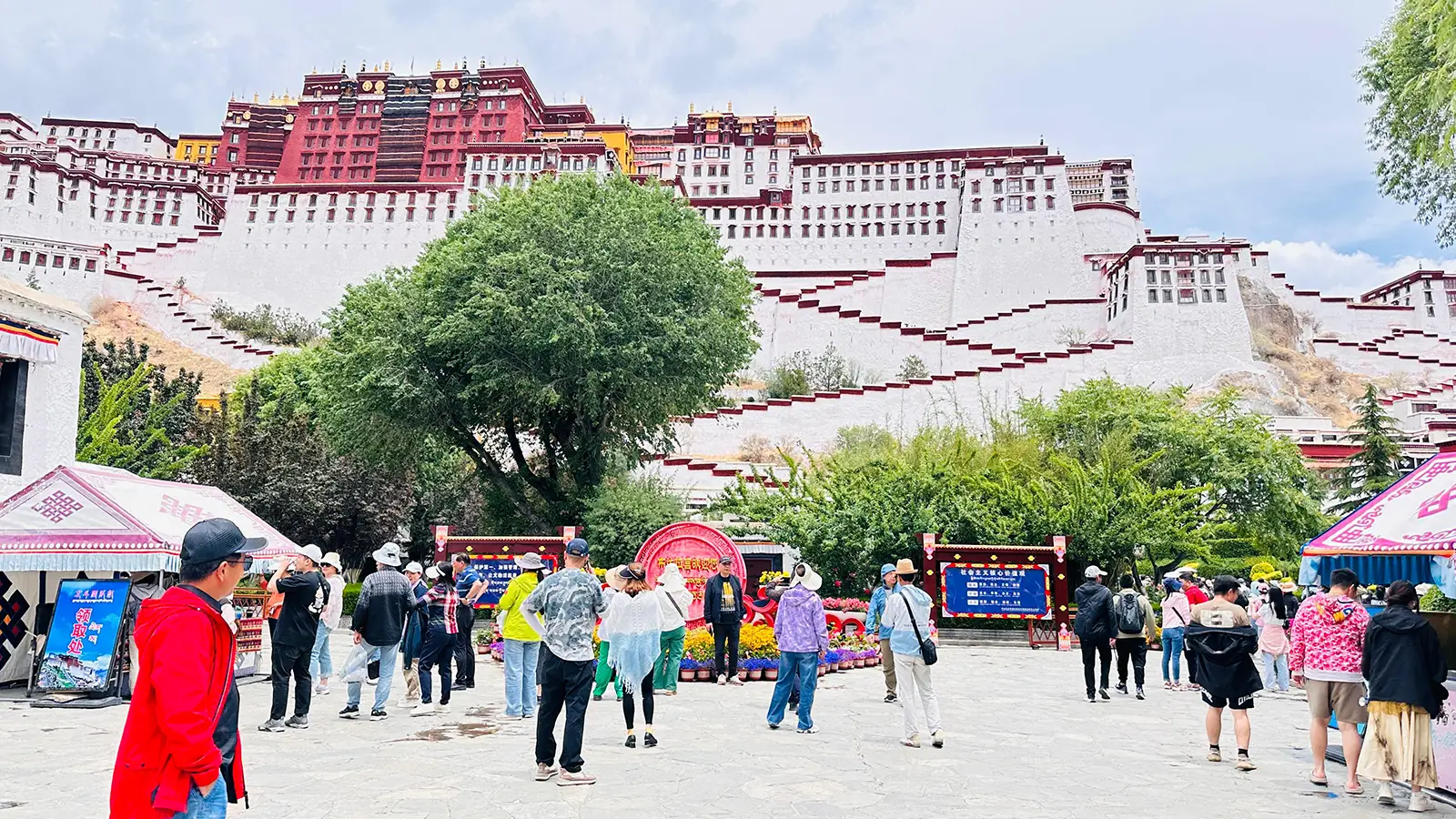
Practical Tips:
- Photography: Inside the palace, photography is often restricted. Respect the guidelines to preserve the sanctity of the site.
- Altitude: The climb can be strenuous due to the high altitude. Take it slow and stay hydrated.
Relaxing at Longwangtan Park
After exploring the palace, descend to Longwangtan Parkat, its base. This serene spot provides a different perspective of the Potala Palace, perfect for capturing stunning photographs. Join locals in traditional Tibetan folk activities, offering a delightful way to engage with the community.
Practical Tips:
- Interaction: Feel free to participate in activities, but always approach respectfully and ask permission when necessary.
- Snacks: Try local snacks sold by vendors in the park for an authentic taste of Tibetan flavors.
Afternoon Visit to Jokhang Temple
Post-lunch, the Jokhang Temple awaits. As the spiritual heart of Tibetan Buddhism, it’s a site of profound significance. Inside, stand before the revered statue of a twelve-year-old Buddha, Sakyamuni. The monastery’s atmosphere will be devoted as pilgrims prostrate themselves outside the temple.
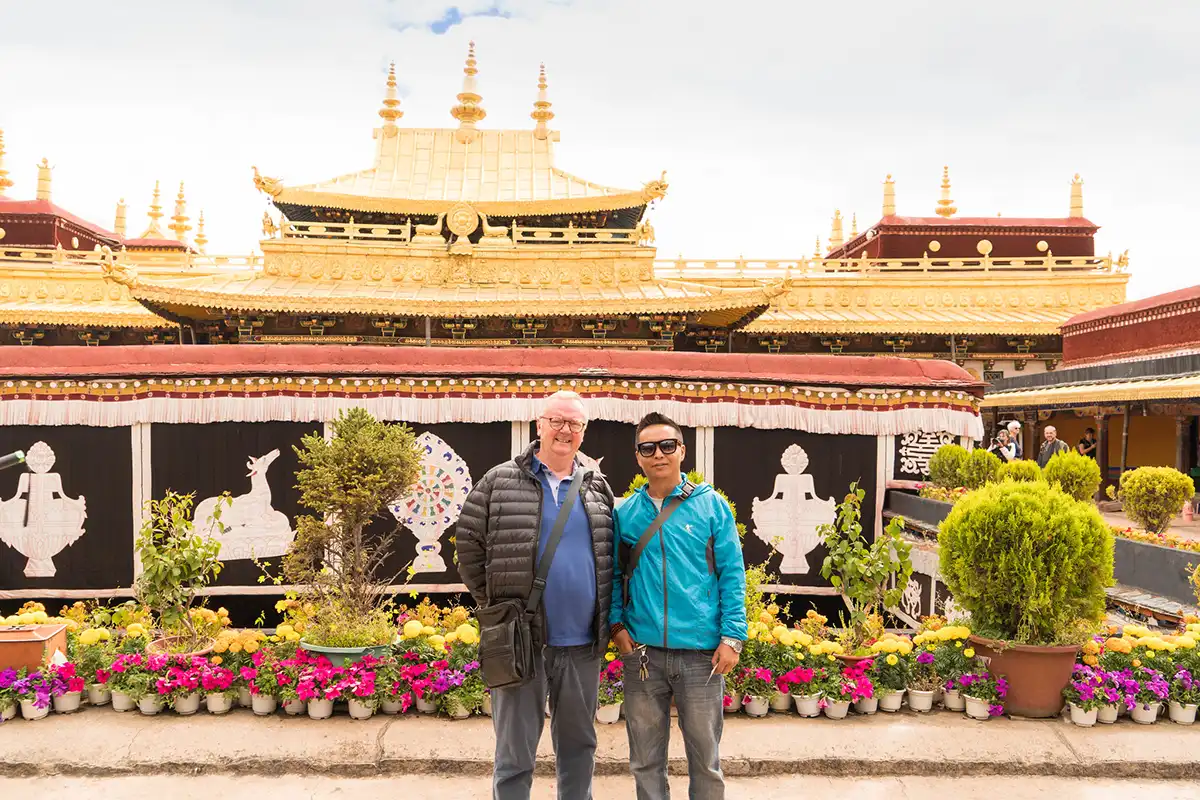
Practical Tips:
- Dress Code: Wear modest clothing as a sign of respect when entering religious sites.
- Offerings: Light a butter lamp or make a small offering if inclined.
Strolling Through Barkhor Street
Encircling the temple is Barkhor Street, a bustling market and pilgrimage route. Join locals and pilgrims on a kora, a clockwise walk around the temple. The street has shops selling Tibetan handicrafts, incense, and souvenirs.

Practical Tips:
- Bargaining: Haggling is expected, so don’t hesitate to negotiate prices.
- Authenticity: Look for quality craftsmanship to ensure you’re purchasing genuine items.
Evening at a Tibetan Tea House
Conclude the day at a lively Tibetan tea house. Sip on traditional sweet tea while mingling with locals. This setting offers a window into daily life in Lhasa. Your guide will share insights into social customs and answer any questions.
Practical Tips:
- Etiquette: Accept tea with both hands as a sign of gratitude when offered tea.
- Conversation: Engaging with locals can enhance your experience, even through simple gestures.
As the sun sets on Day 3 of your Mount Kailash Trip, reflect on the rich experiences and connections made. From the heights of the Potala Palace to the intimate setting of a tea house, the day encapsulates the spirit of Tibet.
Looking Ahead
Tomorrow promises new adventures as the Mount Kailash trip continues. Rest well and prepare for the discoveries that lie ahead.
Additional Advice:
- Health: Continue to monitor how you’re adjusting to the altitude. Rest when needed.
- Preparation: Charge your camera and devices; you’ll want them for the days to come.
By exploring these cultural landmarks, you’re not just sightseeing but engaging with the soul of Tibet. The experiences of Day 3 enrich your Mount Kailash Trip, making it an unforgettable journey of discovery.
Elevation: 3600m
Accommodation: Hotel Yak or similar
Meal: Breakfast
Day 4: Lhasa to Shigatse via Gyantse
Highlights:
- Drive from Lhasa to Shigatse through breathtaking landscapes
- Ascend Gampala Pass and witness Yamdrok Lake
- Lunch with a Tibetan family in a local village
- Visit Korola Glacier and Simila Mountain Pass
- Capture memories in the ancient city of Gyantse
On the fourth day of your Mount Kailash Trip, the adventure continues with a scenic drive covering 360 kilometers from Lhasa to Shigatse via Gyantse. This route offers some of Tibet’s most stunning natural wonders and cultural experiences.
Morning Departure from Lhasa
After breakfast, set out early to make the most of the day. The overland drive promises captivating views and several noteworthy stops. Ensure your camera is ready, and pack some snacks for the road.
Ascending Gampala Pass (4,790 m)
The first significant ascent is to Gampala Pass, sitting at 4,790 meters. Take deep breaths and pace yourself due to the high altitude.
First Glimpse of Yamdrok Lake (4,400 m)
From the pass, the shimmering Yamdrok Lake comes into view. Known as one of Tibet’s most beautiful lakes, its waters are surrounded by snow-capped peaks, including the majestic Mount Nyenchen Khangsar (7,191 m). Spend time at various viewpoints along the lakeshore to fully appreciate its beauty.

Exploring a Local Village
At the far end of Yamdrok Lake, visit a traditional Tibetan village. Here, you’ll have the unique opportunity to enjoy lunch with a local family. This meal offers authentic Tibetan cuisine and a chance to learn about daily life in the region.
Meals Included: Breakfast and Lunch with a Tibetan Village Family
Continuing to Korola Glacier
Back on the road, the next highlight is the Korola Glacier, Tibet’s largest roadside glacier. Its impressive ice tongue extends down the mountainside, providing a close-up look at this natural wonder. Short walks around the area allow for better views and photo opportunities.
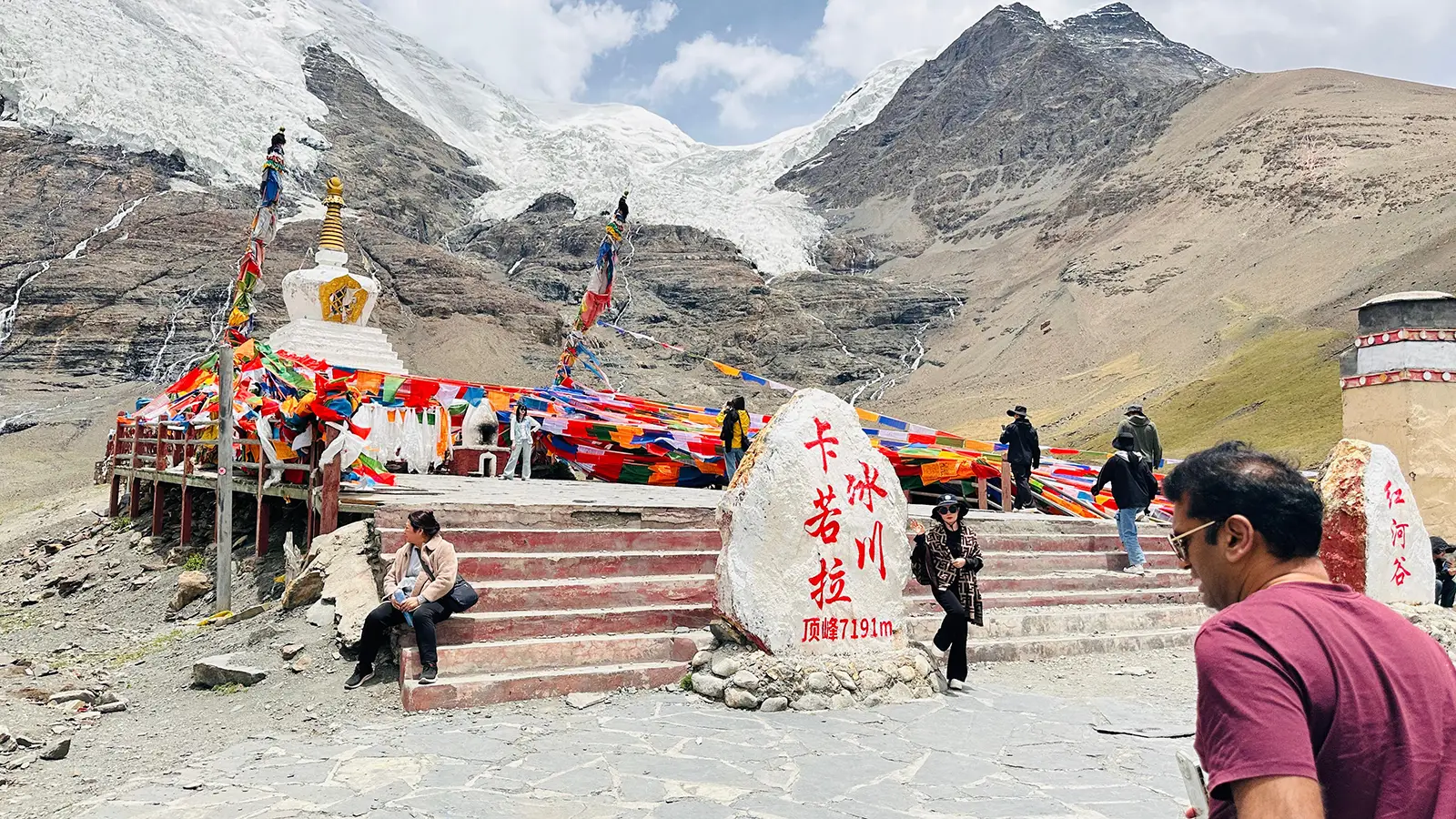
Practical Tips:
- Clothing: Wear warm layers, as the glacier area can be chilly.
- Safety: Stay on designated paths to protect yourself and the fragile environment.
Simila Mountain Pass and Prayer Flags
The drive then leads to Simila Mountain Pass. Here, participate in a local tradition by hanging prayer flags. This act symbolizes wishes for peace and good health for your family. It’s a meaningful way to connect with Tibetan culture.
How to Hang Prayer Flags:
- Choose a spot where flags are traditionally hung.
- Write personal wishes if you have blank flags.
- Tie them securely to prevent them from blowing away.
Photo Stop in Gyantse
Arriving in Gyantse, take a brief stop to capture photos of this ancient city. Notable for its historical significance, Gyantse offers views of the Gyantse Dzong fortress and the Kumbum Stupa in the distance.

Scenic Drive to Shigatse
The final leg to Shigatse showcases landscapes dotted with lush green or golden barley fields, depending on the season. Watch local farmers tending to their crops, a scene that paints a vivid picture of rural Tibetan life.
Observations along the Way:
- Barley Fields: Notice that traditional farming methods are still in use.
- Local Life: Watch for yaks and sheep grazing in the pastures.
Arrival in
Reaching Shigatse, Tibet’s second-largest city, relax in your hotel. This rest is essential as you prepare for the upcoming exploration of Mount Everest.
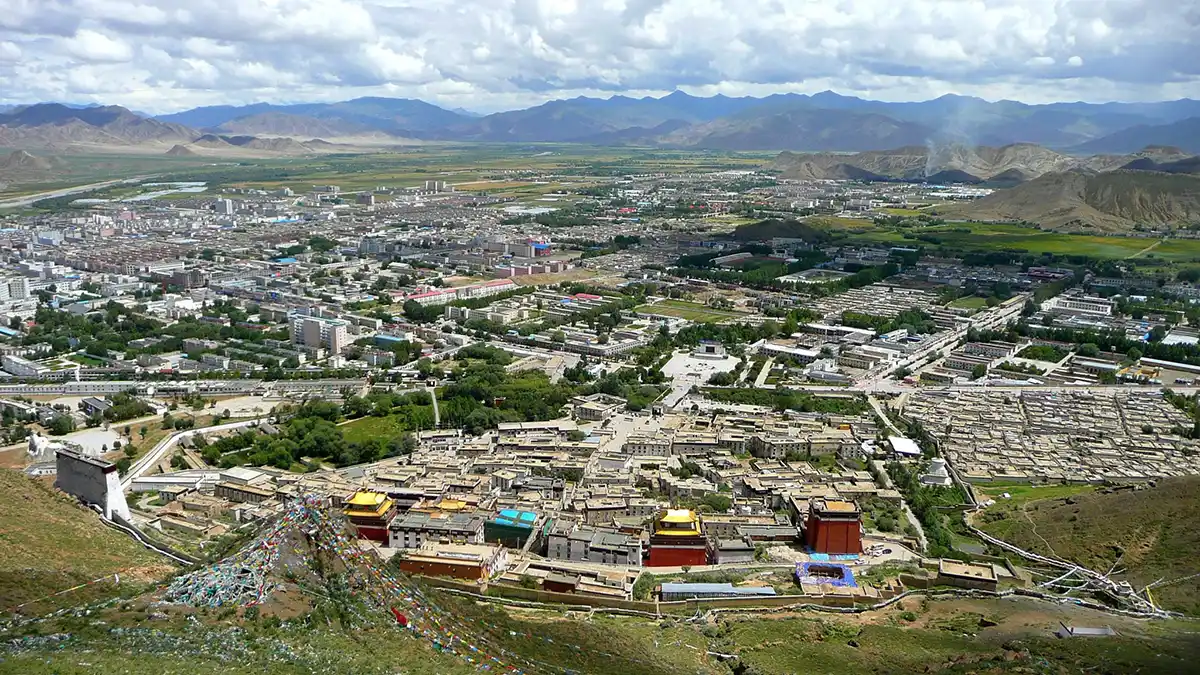
Evening Suggestions:
- Rest: Take time to acclimate and rest after the long drive.
- Explore: If energy permits, take a short walk around the hotel to get a feel for the city.
Overnight: Shigatse
Tips for the Day
- Altitude Awareness: Stay hydrated and move slowly when walking at high elevations.
- Sun Protection: Wearing sunscreen (SPF 50+) and polarised sunglasses is better to protect against intense UV rays.
- Photography: Ensure your camera batteries are charged; the day’s sights will be noticed.
- Respect Local Customs: Always ask before photographing locals or entering private areas.
Day 4 of the Mount Kailash Trip blends natural beauty and cultural immersion. From the serene waters of Yamdrok Lake to the towering presence of Korola Glacier, each stop offers a unique experience. Sharing a meal with a Tibetan family adds a personal touch that enriches your understanding of this remarkable region.
As the day concludes, the anticipation builds for the adventures ahead. Rest well in Shigatse, knowing each day brings you closer to the heart of the Mount Kailash Trip.
Day 5: Shigatse to Everest Base Camp Adventure
Highlights:
- Early morning departure from Shigatse
- First view of Mount Everest at Gyatsola Pass
- Panoramic vistas from Gawula Pass
- Arrival at Everest Base Camp
- Sunset and stargazing at the base of Mount Everest
The fifth day of your Mount Kailash Trip offers some of the most breathtaking views of the Himalayan mountain ranges. Starting from Shigatse at 3,850 meters, you will ascend to the Everest Base Camp at 5,200 meters. This leg of the trip is filled with awe-inspiring sights and unforgettable experiences.
Early Morning Departure from Shigatse
After an energizing breakfast, set off early to maximize the daylight hours. The drive toward Mount Everest is filled with dramatic landscapes and changing terrains. Keep your camera handy, as opportunities for stunning photographs abound.
First Glimpse of Mount Everest at Gyatsola Pass
The journey takes you first to Gyatsola Passat, 5,280 meters. Here, you’ll catch your initial glimpse of Mount Everest. From this vantage point, the mountain appears like a budding lotus flower nestled among the peaks—a sight that leaves many travelers speechless.
Practical Tip: Spend a few moments acclimatizing to the higher altitude. Deep breaths and slow movements help your body adjust.
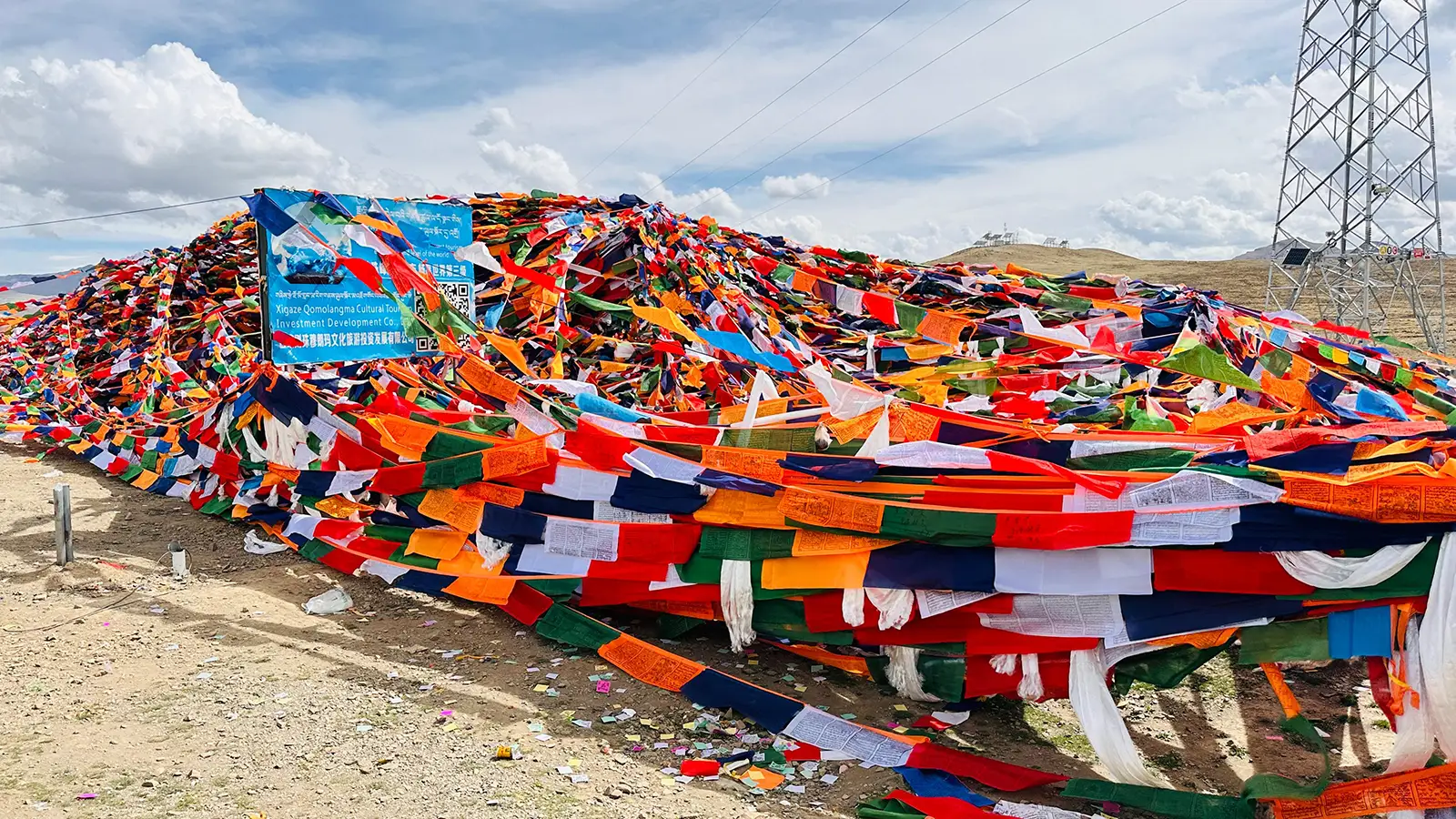
Entering Mount Everest National Nature Reserve
Shortly after, you’ll enter the Mount Everest National Nature Reserve. The natural beauty of this protected area is unparalleled. Watch for local wildlife and the unique flora that thrive in this high-altitude environment.
Panoramic Views from Gawula Pass
Next, ascend to Gawula Pass at 5,198 meters. This spot offers a panoramic view of the Himalayas, including the five tallest peaks. Mount Everest stands prominently among them, providing your second and even more impressive sighting of the world’s highest mountain.
Practical Tip: The winds can be strong at this elevation. Wear layers and secure loose items.
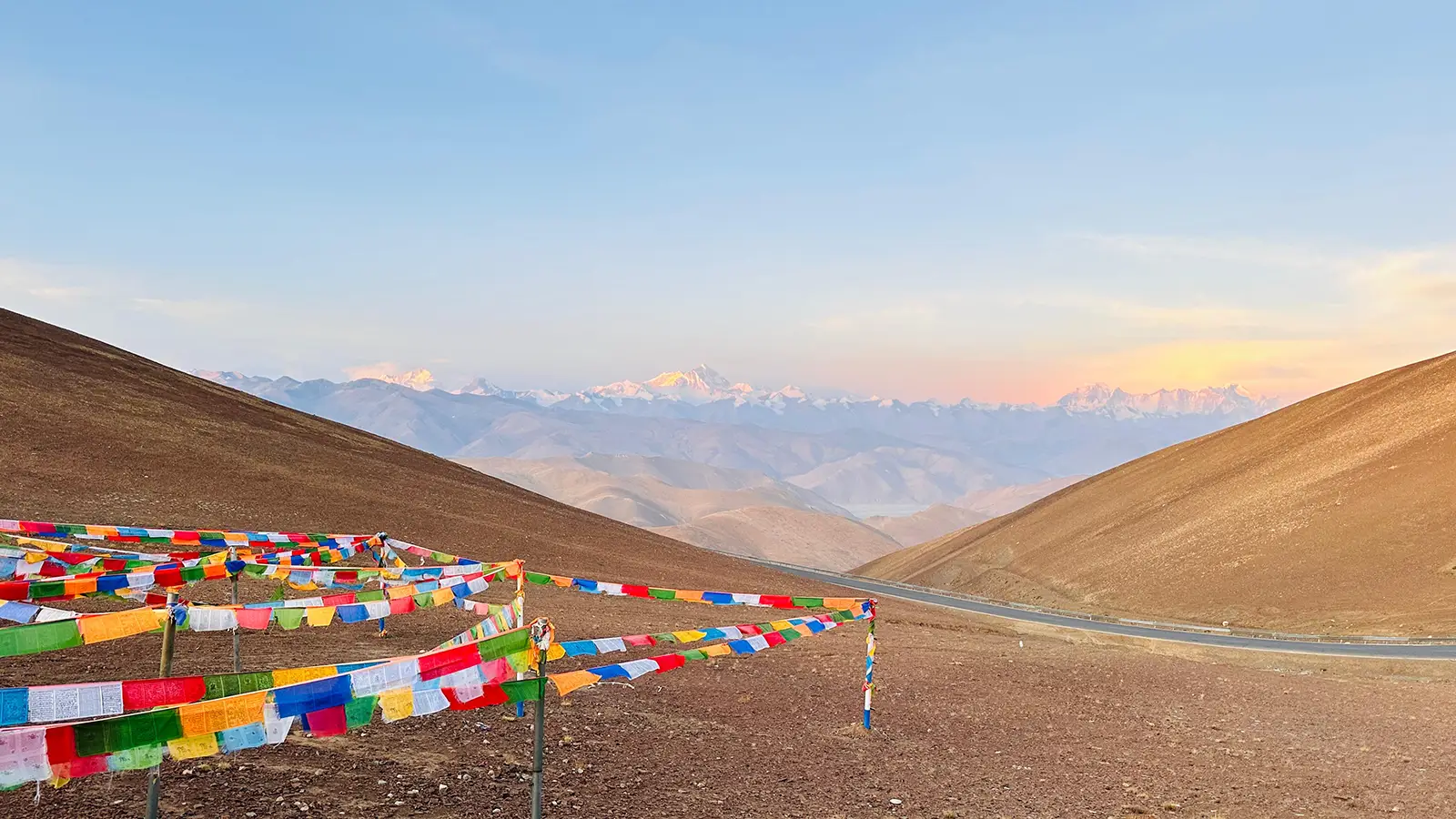
The Winding Road to Everest Base Camp
Continue along the new winding road that leads to Everest Base Camp. Each bend reveals a more stunning view of Mount Everest. This stretch of the drive allows you to appreciate the mountain’s grandeur from different angles, offering your third view of its majestic peak.
Practical Tip: The road can be steep and curvy. If you’re prone to motion sickness, consider taking preventative measures.

Arriving at Everest Base Camp
Upon reaching Everest Base Camp at 5,200 meters, the sheer size of Mount Everest becomes apparent. The mountain rises before you like a colossal white pyramid, dominating the skyline.
Practical Tip: Strolling is essential at this altitude. Allow yourself time to adjust and rest as needed.
Sunset over Mount Everest
Prepare to witness one of the most spectacular sunsets imaginable as the afternoon progresses. The northern face of Mount Everest glows with golden hues as the sun dawns below the horizon. This is your fourth and most enchanting view of the mountain.
Practical Tip: Sunset times can vary, so consult with your guide to ensure you get this highlight.
Stargazing at Everest Base Camp
When night falls, the clear Himalayan sky reveals a dazzling display of stars. The Milky Way stretches overhead, and the snow-capped peak of Mount Everest gleams under the starlight. This fifth and final view of the mountain for the day leaves a lasting impression.
Practical Tip: The temperature drops significantly at night. Dress warmly to enjoy stargazing comfortably.
Overnight Stay and Accommodation Tips
If the tents are closed for winter, you’ll spend the night at a tent hotel at Everest Base Camp or a nearby village. The basic accommodations offer a unique experience of staying close to Mount Everest.
Practical Tip: Facilities are limited, so bring essentials like a flashlight, toilet paper, and personal toiletries.
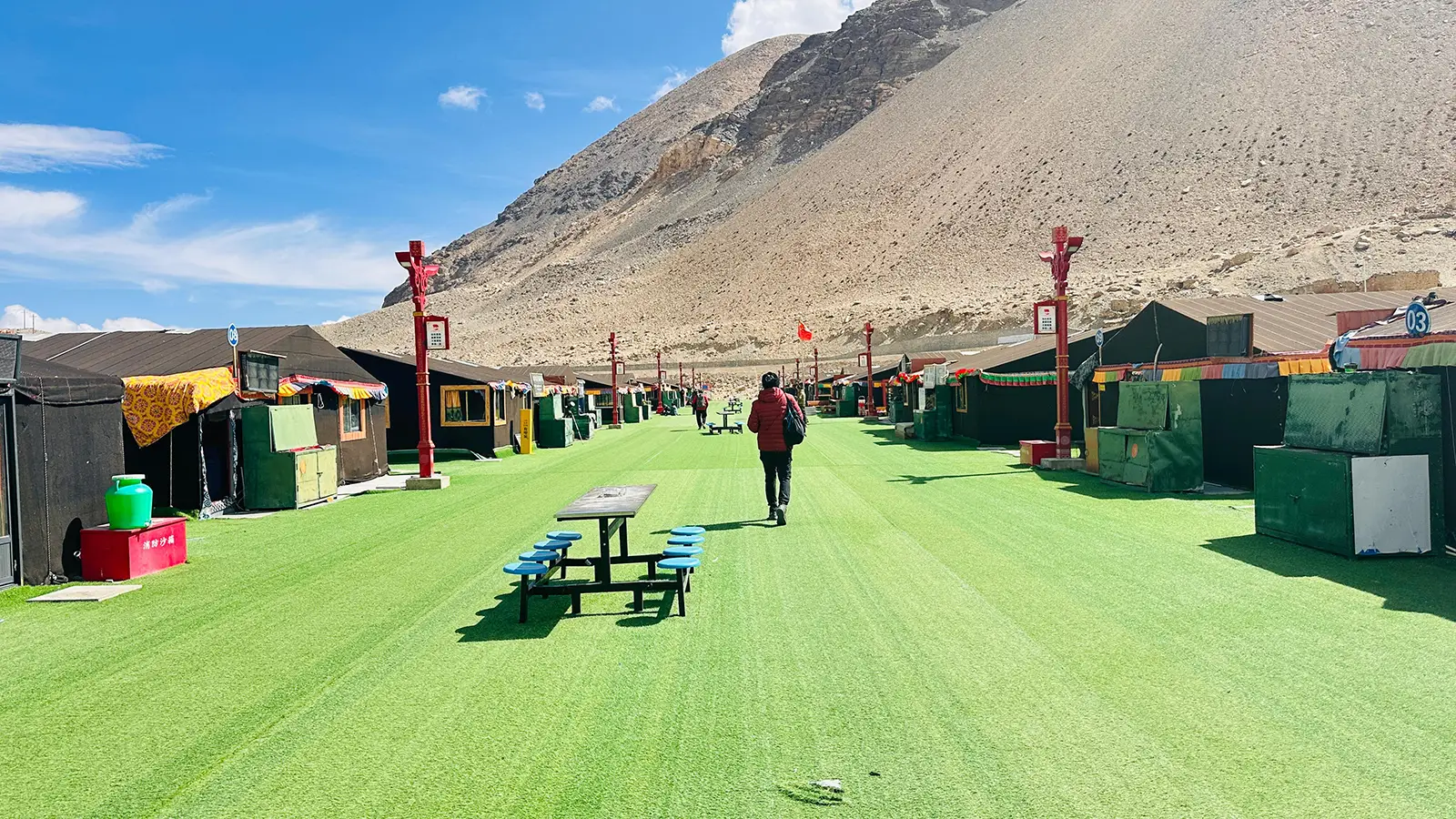
Insider Tips
- Variable Visibility: Mount Everest’s visibility depends on weather conditions. Clear skies offer the best views, but clouds can obscure the mountain unexpectedly.
- Winter Accommodations: From November to March, the tent hotels at Everest Base Camp typically close. During this period, travelers will stay in a nearby village with suitable lodging options.
As Day 5 concludes, reflect on the incredible sights you’ve witnessed on your Mount Kailash Trip. From the first glimpse of Mount Everest to the serene night sky at its base, these experiences are bound to be highlights of your journey.
Meals Included: Breakfast
Overnight: Everest Base Camp or Nearby Village
Looking Ahead
Rest well, knowing that more adventures await as your Mount Kailash Trip continues. The memories made today will be cherished for a lifetime.
Day 6: From Everest Base Camp to Saga via Pelku Tso Lake
Highlights:
- Witness sunrise over Mount Everest
- Visit Rongbuk Monastery, the world’s highest-altitude monastery
- Scenic drive through the Ngari Plateau
- View Mount Shishapangma and Pelku Tso Lake
- Arrive in Saga County, gateway to Mount Kailash
On the sixth day of your Mount Kailash Trip, the journey continues westward along the Ngari Plateau. This leg offers breathtaking landscapes of expansive grasslands, shimmering lakes, and snow-covered mountains as you follow the majestic Himalayas.
Morning Sunrise over Mount Everest
Start your day early to catch the first pink rays of sunlight illuminating the summit of Mount Everest. This spectacle is a photographer’s dream and a memory to cherish. After breakfast, visit the historic Rongbuk Monastery, perched at 5,154 meters. As the highest-altitude monastery in the world, it provides unique insights into the spiritual life of Tibetan monks and nuns.
Practical Tip: The monastery is serene; remember to dress modestly and respect local customs.
Journey to the Enigmatic Ngari Region
Leaving Rongbuk, proceed toward the remote Ngari region, one of Tibet’s most mysterious and captivating areas. This region is home to the sacred Mount Kailash and Lake Manasarovar, both revered Tibetan Buddhism and Hinduism sites.
En Route Views of Mount Shishapangma and Pelku Tso Lake
As you travel, you’ll pass by Mount Shishapangma, soaring to 8,027 meters and ranking among the world’s highest peaks. The road offers close-up views of its three main summits. Below, the golden reflections of Pelku Tso Lake add to the mesmerizing scenery.

Crossing the Grasslands around Peiku Tso Lake
The journey continues across the grasslands surrounding Peiku Tso Lake. The vastness of the landscape, dotted with grazing yaks and nomadic herders, captures the essence of Tibetan highlands.
Arrival in Saga County
Reach Saga County, a vital stop in western Tibet and the gateway to the Mount Kailash area. This bustling town sits at an average altitude of 4,500 meters on the Ngari Plateau. If you need last-minute supplies for your trek, Saga offers a range of essentials to prepare you for the following stages of your Mount Kailash Trip.
Practical Tip: Stock up on snacks, water, and any personal items you might need as facilities become sparser further along the route.
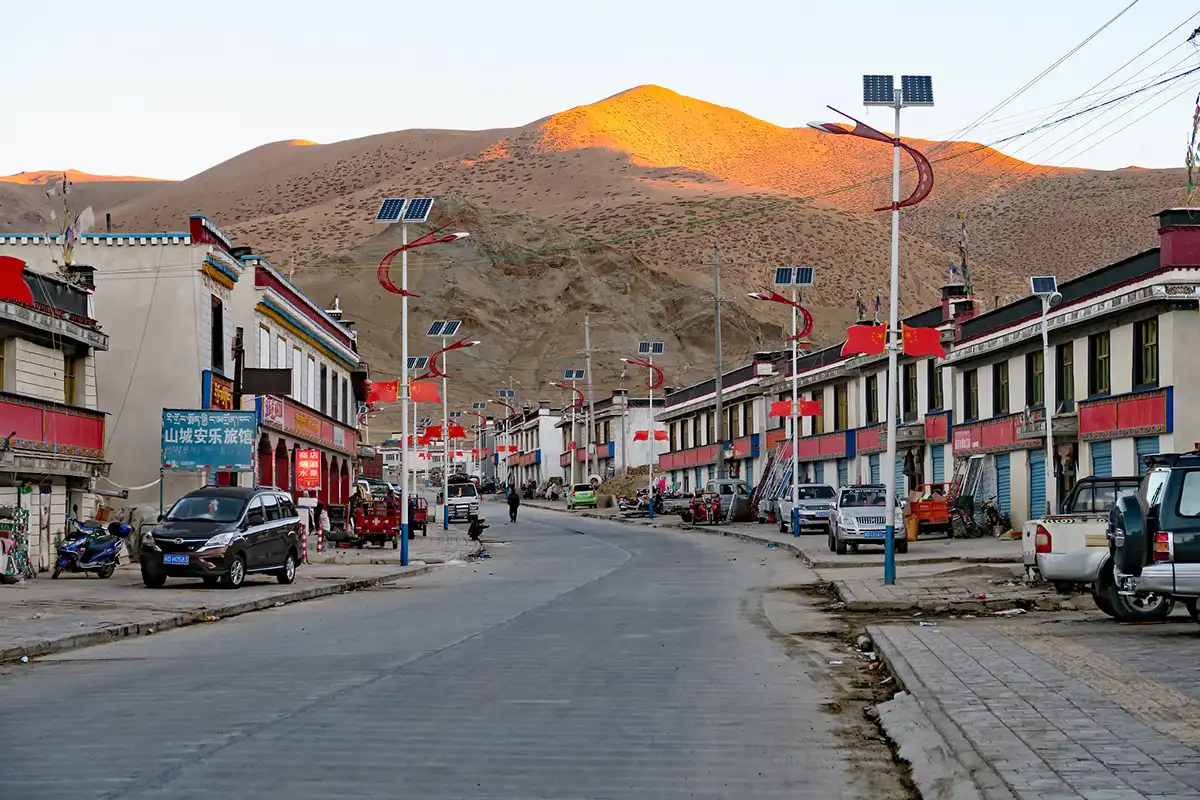
Accommodation: Overnight stay in Saga
Meals Included: Breakfast
Additional Advice:
- Altitude Awareness: Saga is at high elevation; continue to monitor your health and stay hydrated.
- Weather Preparedness: Temperatures can fluctuate; dress in layers to stay comfortable throughout the day.
- Cultural Respect: When visiting monasteries and interacting with locals, maintain respectful behavior to enhance your experience.
Day 6 of the Mount Kailash Trip blends natural wonders and cultural experiences. From witnessing the sunrise over Mount Everest to exploring the pathways leading to Mount Kailash, this day enriches your journey with unforgettable sights and meaningful encounters.
Day 7: Drive from Saga to Darchen via Zhongba
Highlights:
- Scenic drive through the Saga Valley
- Views of snow-capped peaks, grasslands, and lakes
- Crossing Mayum La Pass into the Ngari Region
- First sighting of Mount Kailash and Lake Manasarovar
- Arrival in Darchen, the base for the Mount Kailash trek
On the seventh day of your Mount Kailash Trip, the route takes you from Saga to Darchen, passing through Zhongba. After a hearty breakfast, set off through the picturesque Saga Valley between the Himalayan and Gangdise mountain ranges. The day’s journey offers stunning vistas of snow-capped peaks, expansive grasslands, and serene lakes.
Scenic Drive through Saga Valley
As you travel, watch for herds of yaks and sheep grazing on the vast plains beneath the snowy mountains. The landscape is a tapestry of natural beauty, vibrant colors, and diverse wildlife. The drive is a photographer’s dream, so have your camera ready.
Passing Gongzhucuo Lake
One of the highlights along the way is the striking Gongzhucuo Lake. Its vibrant green waters provide a stunning contrast against the rugged backdrop. Take a moment to appreciate the tranquility and capture some memorable photos.
Crossing Mayum La Pass (5,211 meters)
The journey continues as you ascend Mayum La Pass, standing at 5,211 meters. This pass marks your entry into the remote Ngari Region. The rugged landscape here is home to wild animals and offers a sense of untouched wilderness that few travelers experience.
First Glimpse of Mount Kailash and
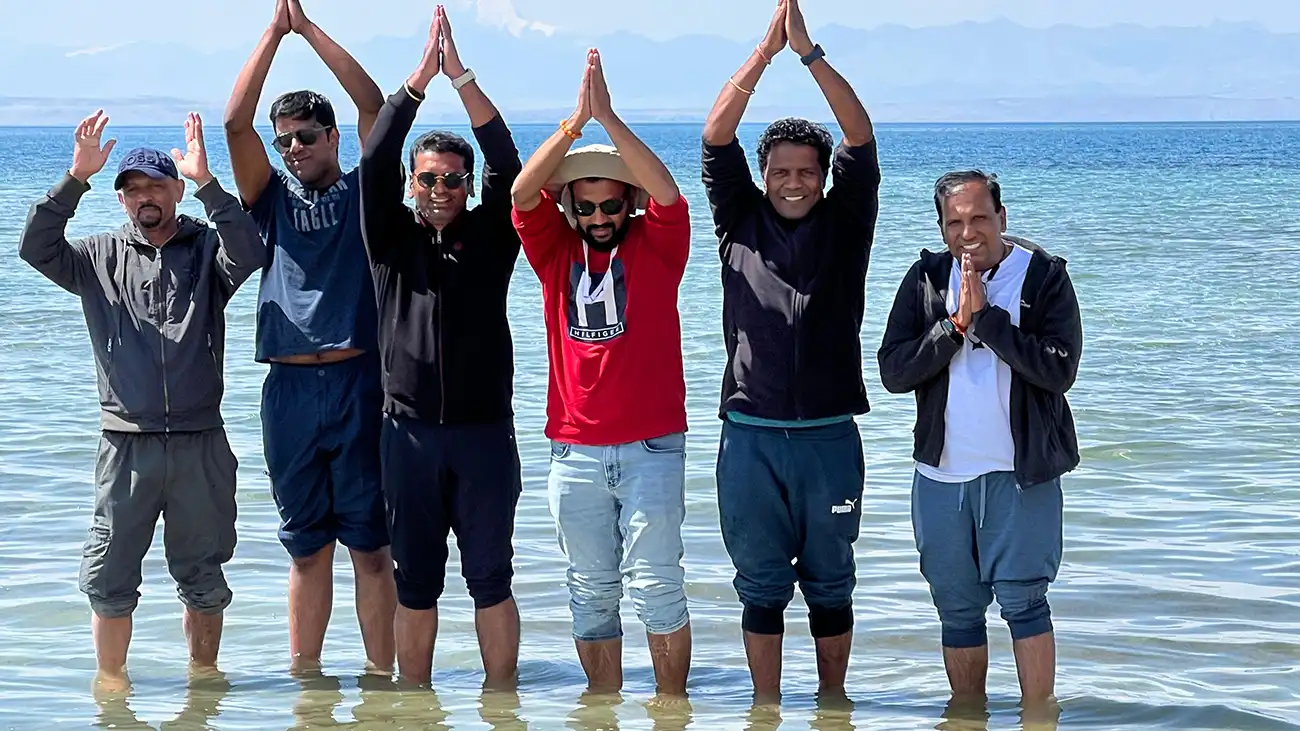
As you proceed, Lake Manasarovar comes into view, one of the holiest lakes in Tibet. Beyond the lake, the majestic Mount Kailash appears in the distance, an inspiring sight that leaves many travelers in awe. This moment is a significant milestone in your Mount Kailash Trip.
Arrival in Darchen
Following the lakeshore, you arrive in Darchen, a small city on the way to Darchen. This town is the starting point for the upcoming four-day trek around the sacred mountain. Upon arrival, check into your hotel to rest and prepare for the trek.

Insider Tips:
- Porter Services: If you require a porter for the trek, inform your guide today to make arrangements. Please note that porter services incur an additional fee.
- Altitude Acclimatization: Darchen is situated at a high altitude. Rest well and stay hydrated to acclimate properly.
Accommodation: Overnight stay in Darchen
Final Preparations for the Trek
Take the evening to organize your gear and ensure you have all the necessary supplies for the trek. Darchen has basic facilities where you can purchase last-minute items if needed. A good night’s sleep is essential as you start on the most challenging and rewarding part of your Mount Kailash Tripthe the following day.
Day 7 offers a blend of natural beauty and cultural significance. The drive from Saga to Darchen via Zhongba is not just a transit but an integral part of the Mount Kailash Trip, providing unforgettable sights and the anticipation of the spiritual journey that awaits.
Day 8: Trekking from Darchen to Dirapuk Monastery
Highlights:
- Begin the 13 km trek from Darchen to Dirapuk Monastery
- Enjoy panoramic views of Mount Kailash’s southern and western slopes
- Explore Dirapuk Monastery and capture stunning photographs
- Witness a breathtaking sunset over Mount Kailash
The eighth day of the Mount Kailash Trip begins an unforgettable trekking adventure. Covering a distance of 13 kilometers, the trail from Darchen to Dirapuk Monastery offers spectacular vistas and a deep connection with the sacred landscape.
Starting the Trek from Darchen
After an early breakfast, take an eco-bus from Darchen to Sarshung Valley. This short ride sets you at the starting point of the day’s trek. The excitement builds as you prepare to walk alongside pilgrims and fellow travelers on this spiritual path.
Tip: Ensure you have all necessary supplies before leaving Darchen. Hydration, snacks, and appropriate clothing are essential for a comfortable trek.
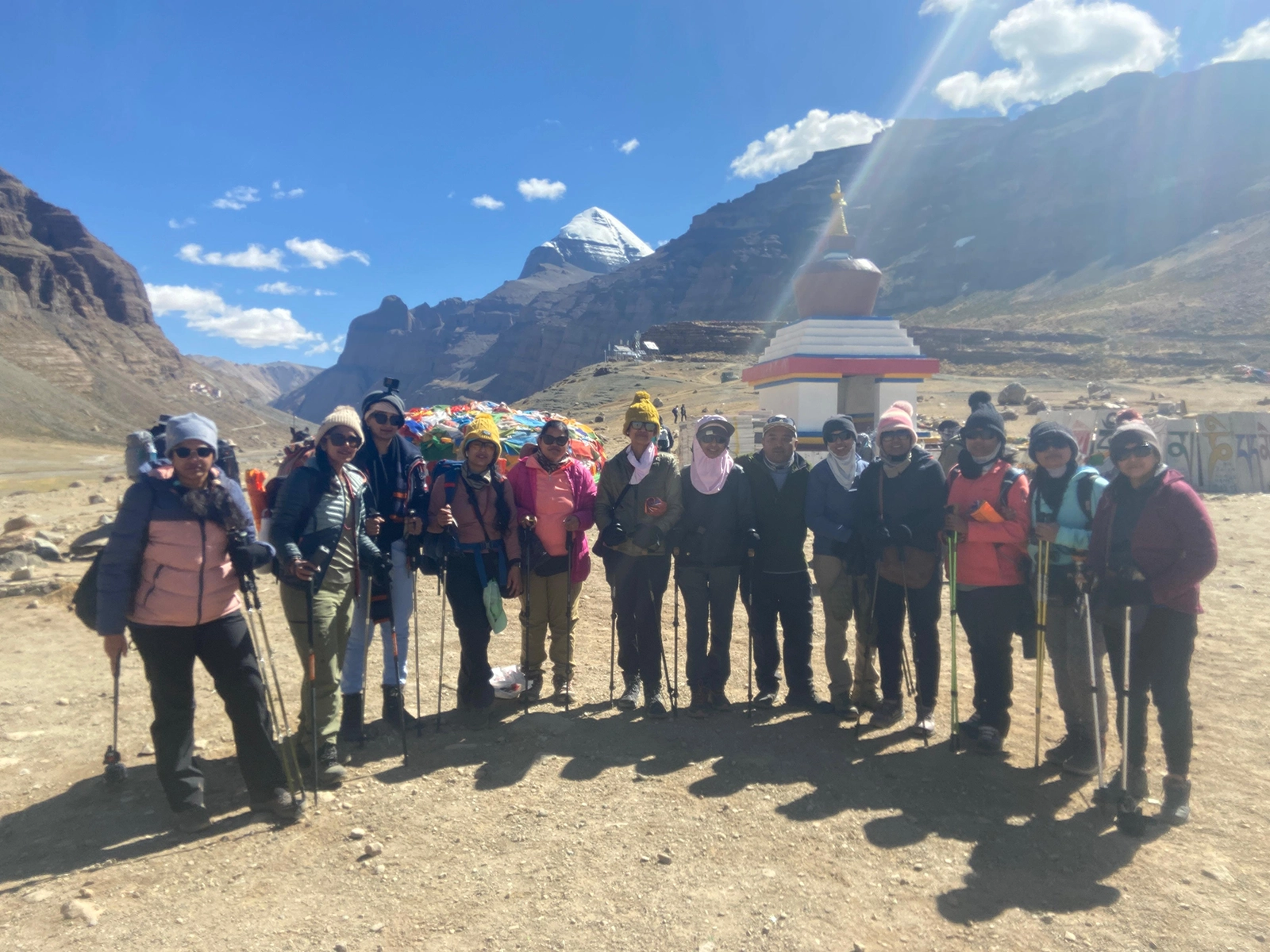
Scenic Views along the Valley
The trail begins gently, meandering through a picturesque valley at the base of Mount Kailash. As you walk, the mountain’s southern slope comes into view, revealing its majestic presence. The path is well-trodden yet retains a sense of serenity.
Transitioning to the southwestern and western slopes, each turn offers new angles of Mount Kailash. The mountain’s unique shape and towering height make for awe-inspiring sights.
Observation: Look out for local wildlife and the occasional herder tending to yaks and sheep. These glimpses into daily life add richness to the Mount Kailash Trip experience.
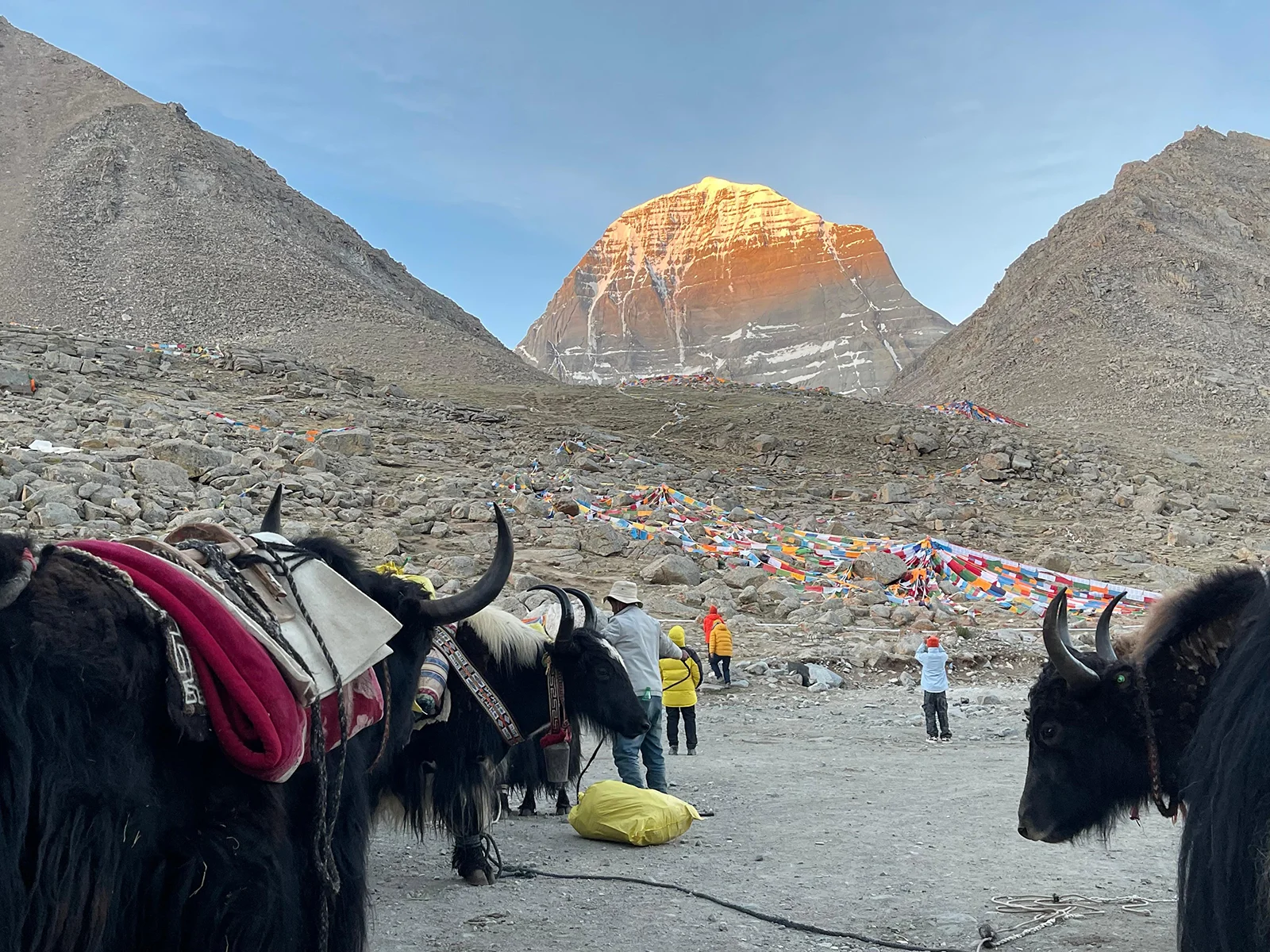
Reaching Dirapuk Monastery
By afternoon, arrive at the vicinity of Dirapuk Monastery. Check into a nearby guesthouse where you can rest and refresh. The accommodation is basic but provides the essentials needed after a day of trekking.
Exploring Dirapuk Monastery
Spend the remaining daylight exploring Dirapuk Monastery, also known as Zhire Temple. Perched at a high altitude, the monastery offers unparalleled views of Mount Kailash’s western face. The spiritual ambiance and the sound of monks chanting create a peaceful atmosphere.
Photography Opportunity: Take the chance to take memorable photos in front of the sacred stupas with Mount Kailash as the backdrop. The contrast of the monastery’s architecture against the rugged mountain makes for striking images.
Sunset over Mount Kailash
If weather conditions allow, stay outside to witness the sunset. The golden rays illuminate the cliffs, casting a warm glow over the landscape. This moment is often cited as a highlight of the Mount Kailash Trip, offering a sense of tranquility and connection with nature.
Advice: Temperatures drop quickly after sunset. Keep warm layers handy to stay comfortable while enjoying the view.
Overnight in the Local Guesthouse
After an eventful day, retire to the guesthouse near Dirapuk Monastery. Rest is crucial as the next day’s trek will be more challenging. Use this time to recharge and reflect on the day’s experiences.
Tips for the Day
- Pace Yourself: The altitude can make the trek more strenuous.
- Stay Hydrated: Drink warm water regularly, even if you don’t feel thirsty.
- Respect Local Customs: When visiting the monastery, dress modestly and be mindful of the spiritual practices.
- Prepare for Weather Changes: Weather in the mountains can be unpredictable. Carry a waterproof jacket and sun protection.
The first day of trekking on Mount Kailash offers not only physical challenge but also spiritual enrichment. As you rest at Dirapuk Monastery, anticipation builds for the next day’s adventures.
Looking Ahead: Tomorrow’s trek will take you over the highest point of the kora, offering new perspectives and deeper insights into the sacred significance of Mount Kailash.
Note: If you require a porter for the remainder of the trek, inform your guide as early as possible. Arrangements can be made, but additional fees may apply. Embrace the experience of trekking around one of the world's most revered mountains.
Day 9: Trek from Dirapuk Monastery to Zutulpuk Monastery
Highlights:
- Cover a 24 km trek from Dirapuk to Zutulpuk Monastery
- Reach the highest point at Dolma La Pass (5,630 meters)
- Witness sunrise over Mount Kailash’s northwest slope
- Visit the sacred Lake of Compassion (Guri Kund)
- Observe glaciers and potential wildlife sightings
Prepare for the most challenging yet rewarding part of the trek on the tenth day of your Mount Kailash Trip. This 24-kilometer journey takes you from Dirapuk Monastery to Zutulpuk Monastery, reaching heights of 5,630 meters. Walking alongside devoted Buddhist pilgrims, you’ll experience the spiritual essence of this sacred region.
Early Morning Ascent from Dirapuk Monastery
Start the day early with a 4-kilometer hike from Dirapuk Monastery. The steep ascent leads you to an altitude of 5,430 meters. The first light of day illuminates Mount Kailash’s northwest slope as you climb. The sunrise here offers a breathtaking view that’s worth the effort.
Tip: The trail is steep, and the air is thin. Pace yourself and take short breaks to adjust to the altitude.
Reaching Dolma La Pass (5,630 Meters)
Continue trekking an additional 2 kilometers to reach Dolma La Pass, after the Darchen, the highest point of the Mount Kailash Trip at 5,630 meters. The pass is adorned with vibrant prayer flags fluttering in the wind and holds deep spiritual significance. Many pilgrims stop here to offer prayers and reflect.
Safety Note: The high altitude and icy, rocky terrain require careful footing. Even in summer, patches of ice can make the path slippery. Use trekking poles and wear appropriate footwear.

The Sacred Lake of Compassion (Guri Kund)
From the pass, you’ll encounter the Lake of Compassion, also known as Guri Kund. This emerald-green lake is believed to purify a lifetime of sins with just one dip. While the water is frigid, the spiritual cleansing it represents is profound.
Observation: Nearby, take in the impressive glaciers cascading down Mount Kailash’s northwest slope. The natural beauty here is awe-inspiring.
Gentle Descent to Zutulpuk Monastery
The trail then leads you on a gentle descent into the valley at the southeastern base of Mount Kailash. The path becomes less strenuous, allowing you to relax and enjoy the surroundings. The landscape transforms into serene grasslands as you approach Zutulpuk Monastery (Dzutripuk Monastery).
Wildlife Spotting: Watch for charming wild animals like marmots and blue sheep grazing in the area.
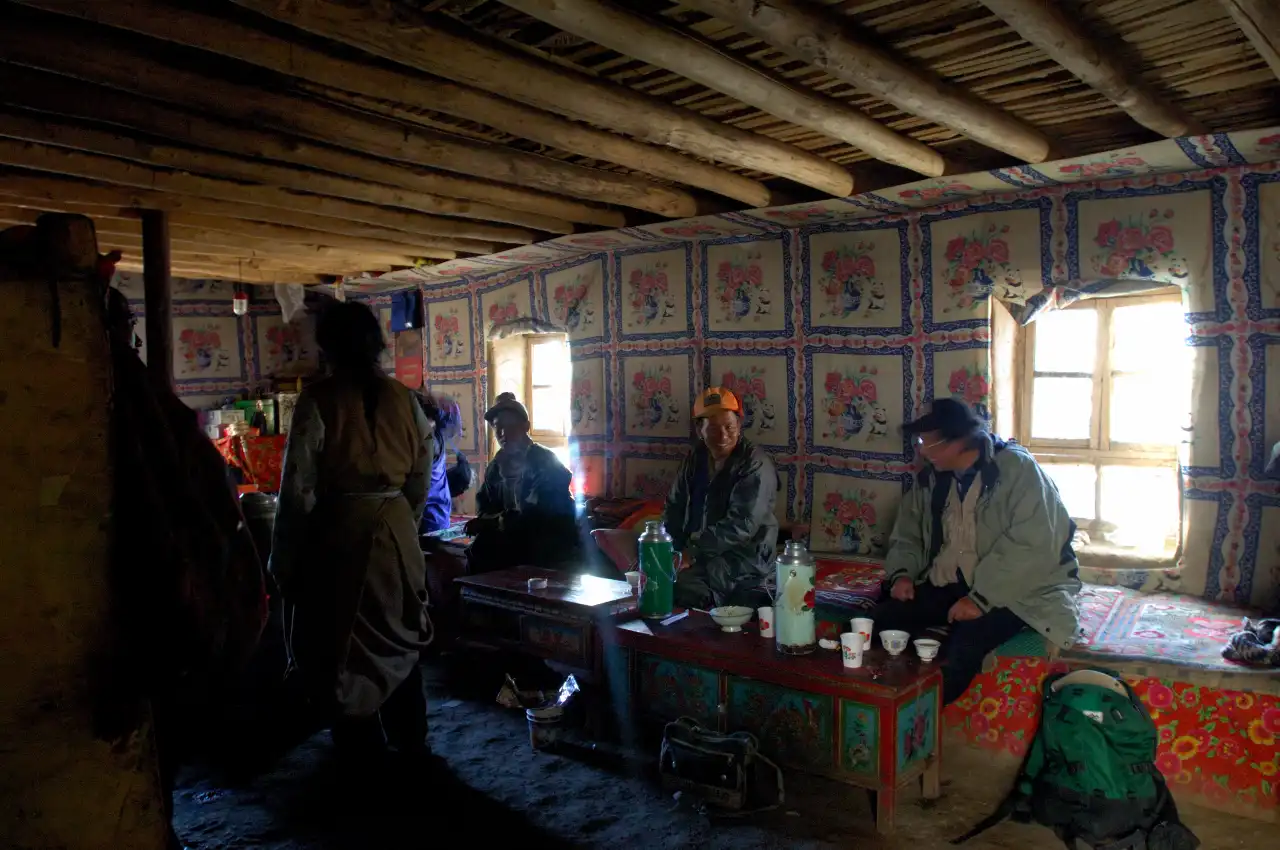
Arrival at Zutulpuk Monastery
Upon reaching Zutulpuk Monastery, explore the cave where Milarepa, a famous Tibetan saint, is said to have meditated. The monastery’s name translates to “Miracle Cave,” adding to its mystical allure.
Rest and Reflection: Rest in the local guesthouse after a long day. Reflect on the incredible achievements of the day and the spiritual journey of the Mount Kailash Trip.
Accommodation: Overnight stay in a local guesthouse near Zutulpuk Monastery.
Practical Tips for Day 10
- Altitude Awareness: Reaching over 5,600 meters, it’s crucial to be mindful of altitude sickness symptoms.
- Clothing: Wear clothes in different layers. Windproof and waterproof gear is essential.
- Footwear: Wear ankle-saver hiking boots.
- Nutrition: Carry energy-rich snacks like nuts and dried fruit to keep your energy levels up.
- Hydration: Drink water regularly, even if you don’t feel thirsty.
Day 10 of the Mount Kailash Trip is physically demanding and spiritually fulfilling. The trek from Dirapuk Monastery to Zutulpuk Monastery tests your endurance but rewards you with unparalleled views and profound experiences. Walking alongside pilgrims deepens your connection to the sacredness of Mount Kailash.
Looking Ahead:
Tomorrow marks the trek’s final leg, bringing you full circle around Mount Kailash. Rest well and prepare for the concluding chapter of this incredible journey.
By following this guide, you’ll navigate the most challenging day of the Mount Kailash Trip with confidence and appreciation for its unique experiences.
Day 10: Completing the Trek from Zutulpuk Monastery to Darchen
Highlights:
- Trek 12 km from Zutulpuk Monastery back to Darchen
- Touch the sacred waters of Lake Manasarovar
- Option to relax in nearby hot springs
- Reflect on completing the Mount Kailash kora
On the eleventh day of your Mount Kailash Trip, you complete the final leg of the kora, a 12-kilometer trek from Zutulpuk Monastery back to Darchen. This day offers a blend of physical accomplishment and spiritual rejuvenation, culminating at the sacred Lake Manasarovar.
Morning Trek to Darchen
Start the day early, savoring the morning’s tranquility at Zutulpuk Monastery. The trail back to Darchenis is relatively flat and less demanding than in previous days. As you walk, take in the serene landscapes and reflect on the journey around Mount Kailash.
Tips for the Trek:
- Pace Yourself: Even though the path is gentler, maintain a steady pace.
- Stay Hydrated: Continue to drink water regularly.
- Engage with Pilgrims: Share stories with fellow trekkers and pilgrims you meet.
Arrival in Darchen
Reaching Darchen marks the completion of the kora. This is a significant achievement, celebrated by pilgrims and trekkers alike. Take a moment to appreciate your accomplishment on the Mount Kailash Trip.
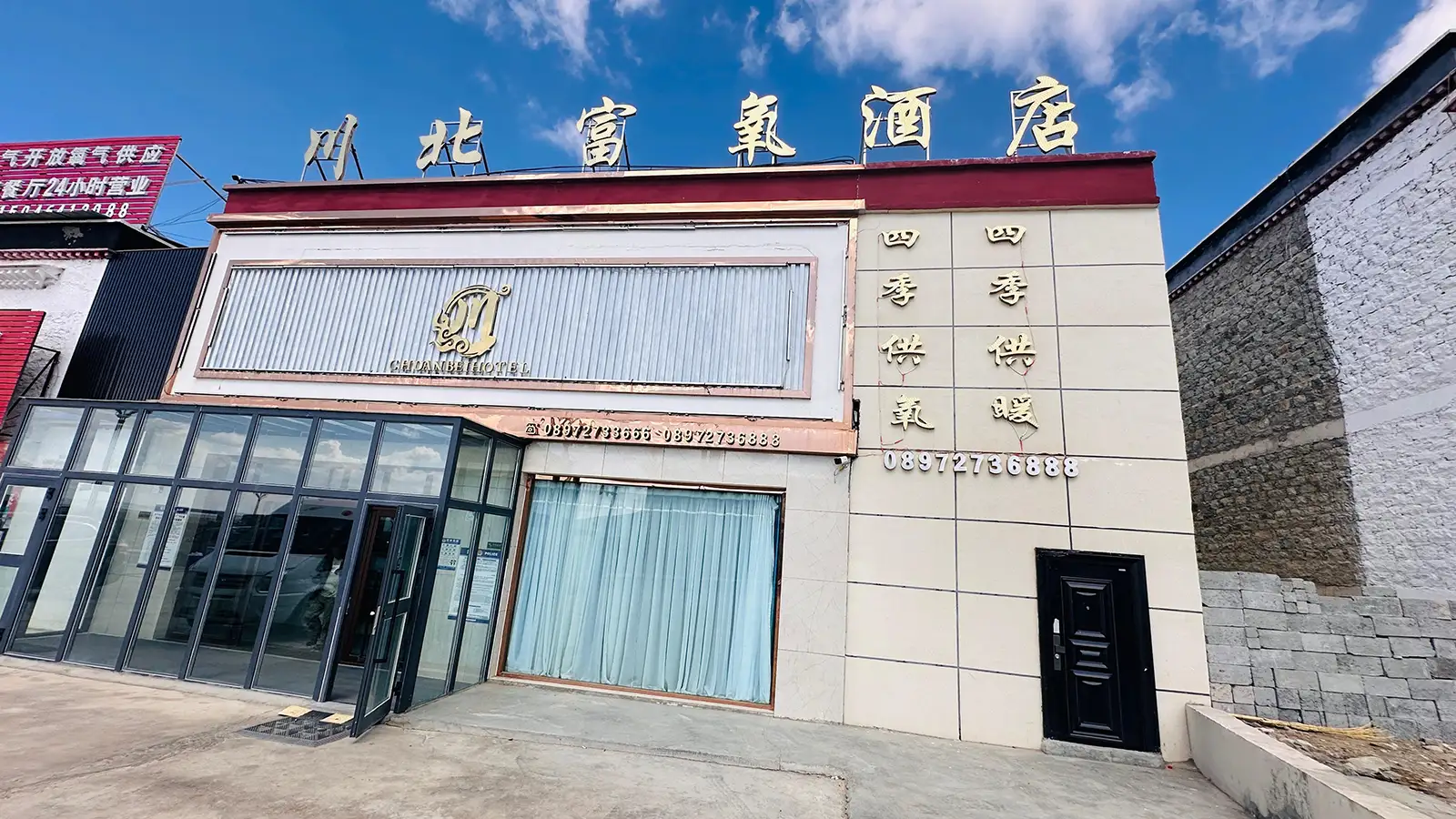
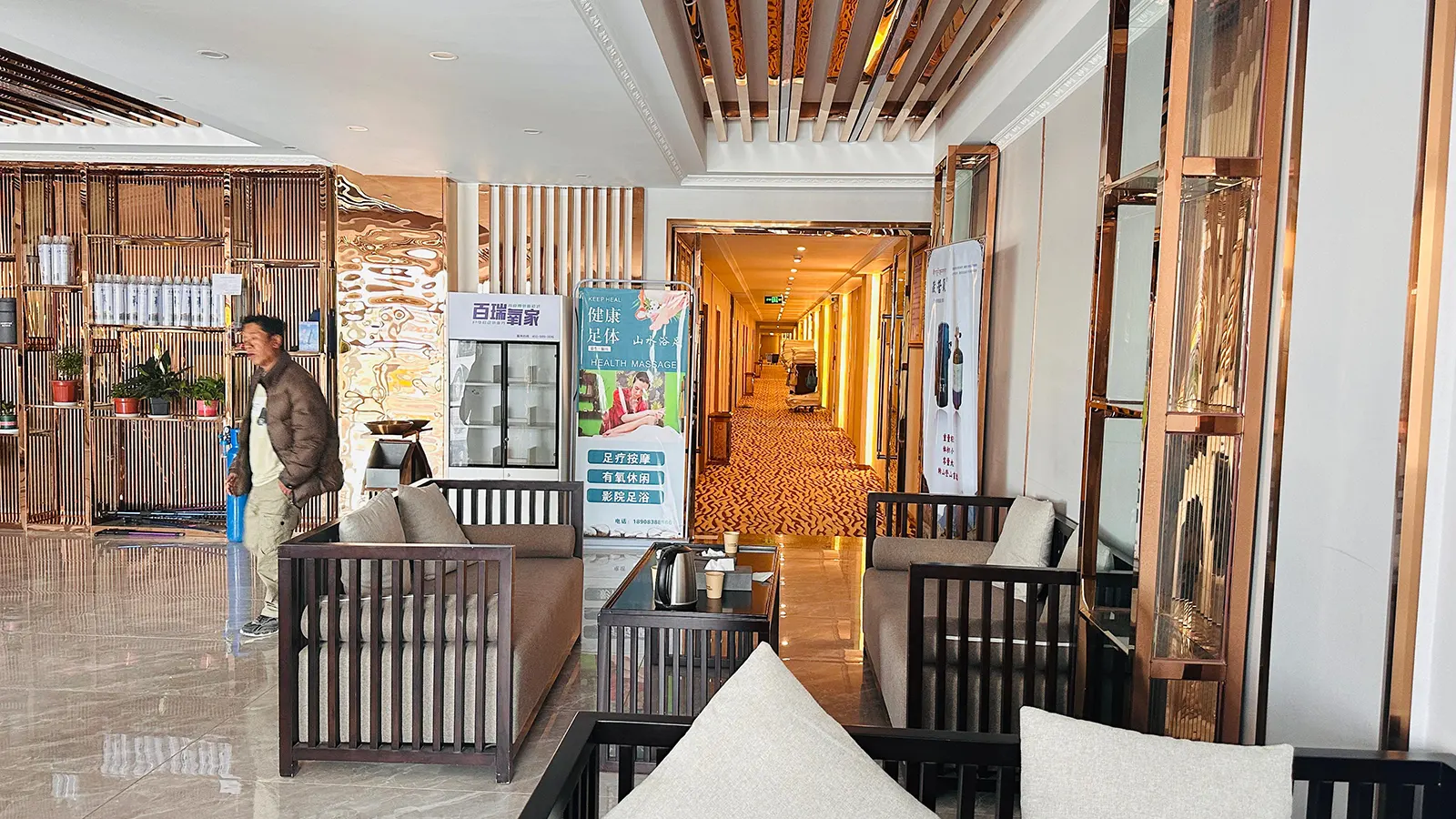
Evening in Darchen
Return to Darchen for the evening. Enjoy a well-deserved rest at your accommodation, reflecting on the incredible experiences of the Mount Kailash Trip.
Suggestions for the Evening:
- Group Dinner: Share a meal with fellow travelers to celebrate the trek’s completion.
- Journaling: Document your thoughts and feelings about completing the kora.
- Plan Ahead: Prepare for the following stages of your journey, whether returning home or continuing to explore Tibet.
Accommodation: Overnight stay in Darchen.
Reflecting on the Mount Kailash Trip
Completing the kora around Mount Kailash is more than just a physical feat; it’s a spiritual milestone that leaves a lasting impact. The combination of challenging treks, breathtaking scenery, and cultural immersion makes this trip a transformative experience.
Key Takeaways:
- Personal Growth: Overcoming the trek’s challenges builds resilience and confidence.
- Cultural Insights: Interacting with pilgrims and locals enriches your understanding of Tibetan traditions.
- Spiritual Connection: Visiting sacred sites fosters a deeper connection with the spiritual aspects of the region.
Final Tips:
- Health Check: Monitor how you feel after the trek. High altitudes and physical exertion can take a toll.
- Stay Connected: Keep in touch with your guide for any assistance needed.
- Share Experiences: Consider sharing your Mount Kailash Trip experiences with friends and family or through social media.
As Day 11 concludes, you carry memories of accomplishment and spiritual fulfillment. The Mount Kailash Trip offers an unparalleled adventure that resonates long after you’ve left Tibet’s sacred mountains and lakes.
Day 11: Journey from Darchen Back to Saga
Highlights:
- Morning departure from Darchen
- Scenic drive across the Ngari Plateau
- Stops at picturesque meadows and tranquil lakes
- Evening arrival in Saga for overnight stay
On the twelfth day of your Mount Kailash Trip, it’s time to bid farewell to the majestic Ngari Plateau and retrace your steps back toward the Himalayas. This day offers a final opportunity to soak in the untouched landscapes that make this region so enchanting.
Morning Departure from Darchen
After a hearty breakfast, prepare for the journey to Saga. Leaving Darchen, you’ll carry memories of the sacred Mount Kailash and the spiritual experiences that have marked this pilgrimage.
Tip: Ensure all your belongings are securely packed. Double-check your accommodation to avoid leaving anything behind.
Scenic Drive across the Ngari Plateau
The drive back to Saga is a visual feast. The road weaves through the expansive Ngari Plateau, offering panoramic views of snow-capped peaks from both the Himalayas and the Gangdise Mountain ranges. The vastness of the plateau against the backdrop of towering mountains creates a sense of serenity and awe.
Observation: Notice how the changing light throughout the day casts different hues on the landscape, making each moment unique.
Stops at Grassy Meadows and Serene Lakes
There will be stops at lush meadows and calm lakes along the way. These spots are perfect for stretching your legs and breathing in the crisp, clean air.
Grassy Meadows
- Photography Opportunity: Capture the vibrant greens of the meadows contrasted against the rugged mountains.
- Relaxation: Take a moment to sit and appreciate the tranquility.
Serene Lakes
- Reflection: The still waters often mirror the sky and surrounding peaks, creating picturesque scenes.
- Wildlife Spotting: Watch for birds and other wildlife frequenting these watering holes.
Wildlife and Natural Beauty of Ngari
The Ngari region is home to diverse wildlife. As you travel, you might spot:
- Wild Yaks: Grazing in the distance or crossing the plains.
- Antelopes: Swift and graceful, sometimes seen in herds.
- Birdlife: Eagles soaring overhead or waterfowl near lakes.
Arrival in Saga
By late afternoon or early evening, you’ll arrive in Saga. This town serves as a crossroads for travelers and offers a comfortable resting place.
Settling In
- Accommodation: Check into your hotel and freshen up.
- Evening Activities: You might explore local markets or relax at the hotel.
Note: Saga provides essential amenities, so take the chance to replenish any supplies if needed.
Tips for the Day
- Stay Hydrated: The altitude and dry climate can lead to dehydration.
- Snacks: Carry some light snacks for the journey to keep your energy levels up.
- Comfort Breaks: Use restroom facilities when available, as stops can be spaced out.
As you settle in for the night in Saga, reflect on the incredible experiences of your Mount Kailash Trip. The journey from Darchen back to Saga brings you closer to the end of your adventure and reinforces the profound connection you’ve developed with the landscapes and culture of Tibet.
Looking Ahead:
The trip is nearing its conclusion, but there are still moments to cherish and memories to make. Rest well, knowing that you’ve been part of something extraordinary.
Day 12: Drive from Saga to Gyirong
Highlights:
- Morning departure from Saga
- Scenic drive to Gyirong Valley
- The transformation from snowy peaks to lush forests
- Exploration of Gyirong Town and Valley
- Visit Sherpa villages and dense forests
- Overnight stay in Gyirong
Be ready to witness a remarkable shift in the Tibetan landscape on the thirteenth day of your Mount Kailash Trip. The route from Saga to Gyirong offers a blend of snow-capped mountains and vibrant forests, showcasing the diverse beauty at the edge of the Himalayas.
Morning Departure from Saga
After breakfast, set out from Saga towards the hidden gem of Gyirong Valley. The road winds through majestic terrains, and as you descend in altitude, you’ll notice the stark, barren lands giving way to verdant greenery.
Descent into Gyirong Valley
The journey reveals dramatic changes in scenery. The high-altitude deserts transition into lush forests, and the air becomes more humid and oxygen-rich. This descent is a refreshing change from the dry climate experienced earlier on your Mount Kailash Trip.
Exploring Gyirong Town and Valley
Arriving in Gyirong Town by afternoon, you’ll have ample time to explore the valley that British explorer Howard Bury once praised as one of the world’s most beautiful. The town serves as a peaceful retreat, surrounded by stunning natural vistas.
Visiting Sherpa Villages and Dense Forests
Wander through dense forests and Sherpa villages, home to various flora and fauna. The trails here offer gentle walks suitable for most fitness levels.
Admiring Snow-Capped Peaks amidst Greenery
Despite the lower altitude, the snow-capped peaks of the Himalayas remain visible, rising majestically above the green forests. This juxtaposition creates breathtaking views that highlight the Mount Kailash Trip.
Overnight Stay in Gyirong
Settle in for the night at your accommodation in Gyirong. The town offers comfortable lodging options, allowing you to rest and rejuvenate for the next phase of your journey.
Practical Tips for Day 13:
- Altitude Change: As you descend, you may feel a significant difference in oxygen levels. This can be energizing, but continue to stay hydrated.
- Clothing: Pack layers. The climate becomes more humid, but evenings can still be cool.
- Photography: Keep your camera accessible. The changing landscapes provide excellent photo opportunities.
Day 13 of the Mount Kailash Trip allows you to experience the diverse environments of Tibet. From the high-altitude peaks to the rich forests of Gyirong Valley, this day encapsulates the natural beauty that makes this region so captivating.
As your Mount Kailash Trip continues, embrace the unique experiences each day brings. The journey from Saga to Gyirong enriches travel and deepens your connection with Tibet’s incredible landscapes and cultures.
Day 13: Returning from Gyirong to Tingri
Highlights:
- Relaxing morning in Gyirong
- Optional departure to Kathmandu
- Afternoon drive to Tingri
- Ascending back to the Himalayan plateau
- Overnight stay in Tingri
On the fourteenth day of the Mount Kailash Trip, prepare to transition from the lush forests of Gyirong back to the highlands of the Himalayas. The day offers a blend of relaxation and scenic travel, providing a chance to reflect on the experiences of the past two weeks.
Morning Relaxation in Gyirong
Begin your day with a leisurely morning in Gyirong, known for its tranquil atmosphere and rich greenery. Use this time to explore local markets, enjoy a peaceful walk, or rest at your accommodation. The lower altitude and humid climate make it a comfortable place to unwind.
Optional Departure to Kathmandu
For travelers planning to continue their adventure in Kathmandu after the Mount Kailash Trip, this morning presents the opportunity to depart. The border crossing is convenient from Gyirong, and arrangements can be made to drop you off in Kathmandu without additional charges. Please note that accommodation in Kathmandu will need to be arranged independently.
Tip: Ensure all travel documents are in order if crossing into Nepal. Double-check visa requirements and border regulations to facilitate a smooth transition.
Afternoon Ascent to Tingri
After lunch, start on the drive back to Tingri County in Shigatse. As the road ascends, notice how the landscape transforms once again. The vibrant forests gradually give way to the rugged beauty of the Himalayan plateau. The ascent offers sweeping views of majestic mountains, reminding you of the region’s grandeur.
Scenic Highlights
- Mountain Vistas: Capture the stunning panoramas of snow-capped peaks and vast horizons.
- Cultural Landscapes: Observe traditional Tibetan settlements dotting the landscape.
Arrival and Overnight Stay in Tingri
Upon reaching Tingri in the afternoon, check into your hotel and rest. Tingri is a gateway to Mount Everest and offers clear views of some of the world’s highest peaks. The town provides basic amenities and a comfortable place to relax after the day’s travel.
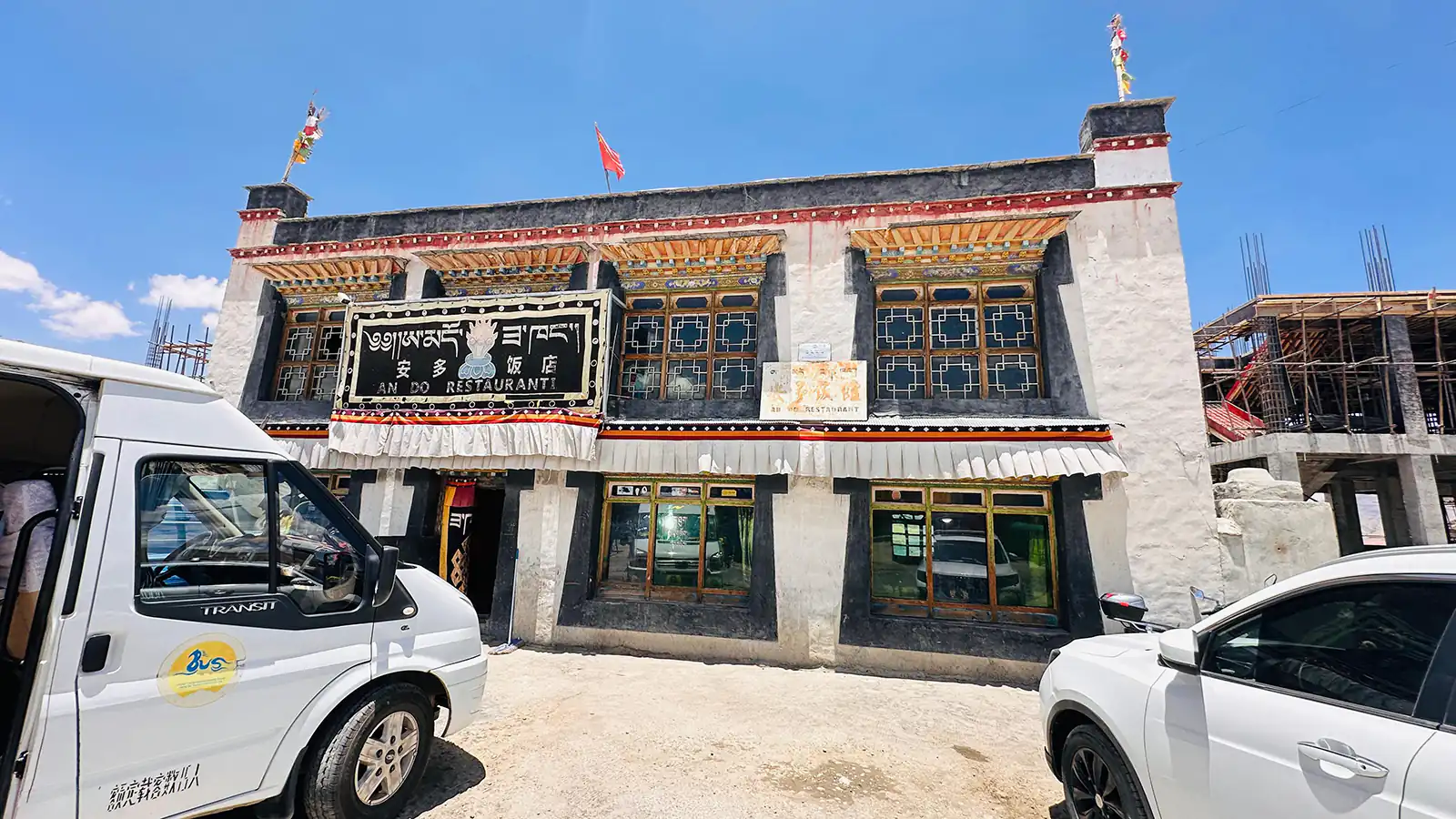
Evening Suggestions
- Local Cuisine: Try traditional Tibetan dishes at a local restaurant.
- Stargazing: The high altitude and clear skies make Tingri an excellent place to observe the stars.
- Reflection: Consider journaling about your experiences on the Mount Kailash Trip.
Practical Tips for Day 14:
- Altitude Adjustment: As you ascend back to higher elevations, be mindful of any altitude-related symptoms.
- Clothing: Wear layers to adjust to the cooler temperatures of the plateau.
- Photography: Afternoon lighting can provide excellent conditions for photography. Keep your camera accessible.
Looking Ahead
As the Mount Kailash Trip approaches its conclusion, take the opportunity to savor the remaining moments in Tibet. The journey from Gyirong to Tingri bridges different landscapes and encapsulates the diverse experiences that make this trip unforgettable.
Day 14: Visiting Tashilhunpo Monastery and Return to Lhasa
Highlights:
- Morning exploration of Tashilhunpo Monastery in Shigatse
- Scenic drive back to Lhasa along the Yarlung Tsangpo River
- Overnight stay in Lhasa
On the fifteenth day of your Mount Kailash Trip, the focus shifts to cultural enrichment and reflection. Begin the day with a visit to the impressive Tashilhunpo Monastery, the largest monastery in Shigatse.
Morning Visit to Tashilhunpo Monastery
After breakfast, go to Tashilhunpo Monastery, which sprawls across the hillside. Founded in 1447 by the first Dalai Lama, this monastery is a significant spiritual center for Tibetans.
Key Attractions:
- Maitreya Buddha Statue: Marvel at the world’s most giant gilded statue of Maitreya Buddha, standing at an impressive 26 meters tall.
- Grand Halls and Chapels: Wander through halls with intricate murals and ancient relics.
- Monastic Life: Observe monks engaged in daily prayers and rituals, offering a glimpse into their spiritual practices.
Tip: Respect local customs by dressing modestly and asking for permission before taking photographs inside the monastery.
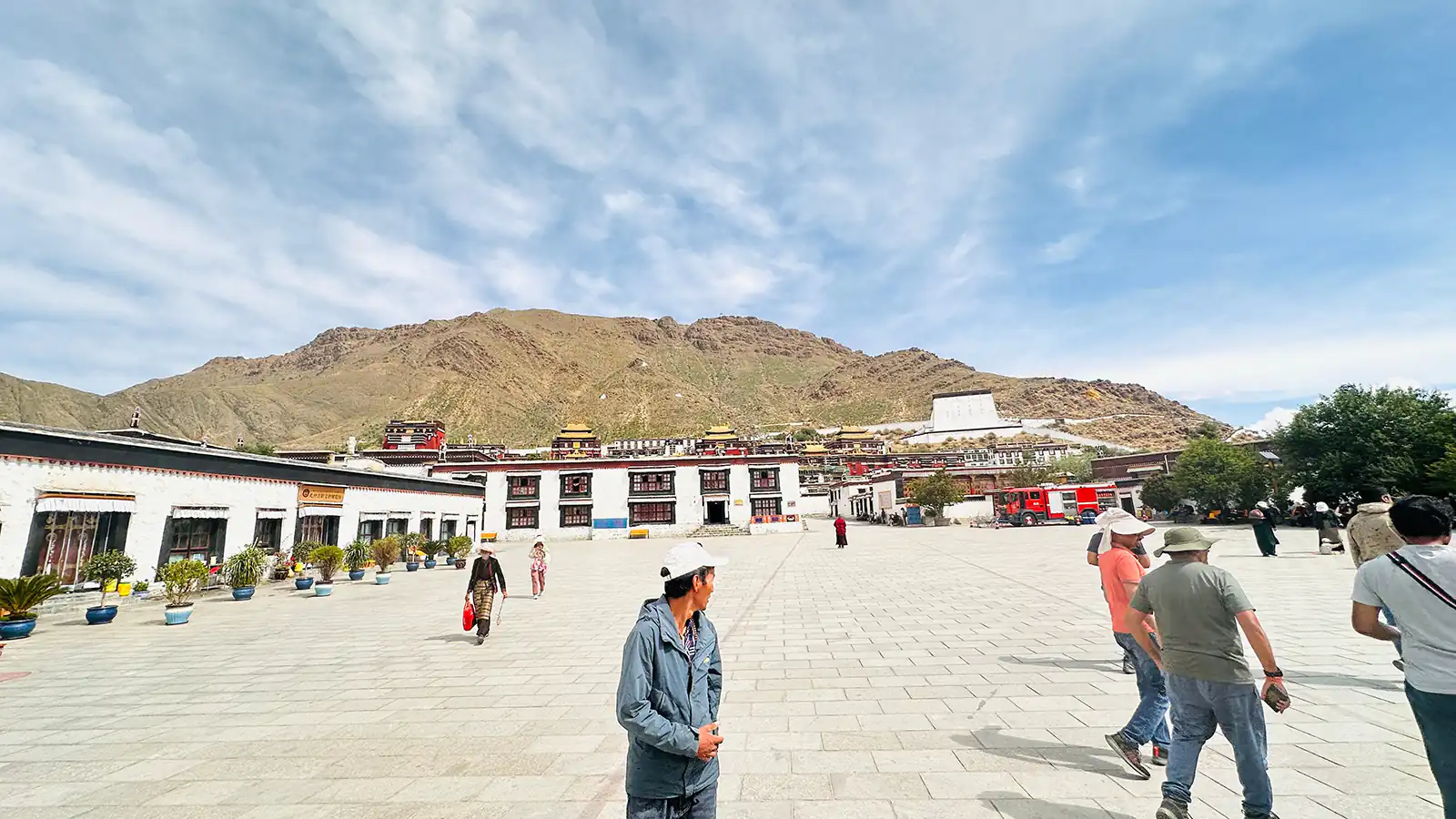
Scenic Drive Back to Lhasa
Following the monastery visit, set off on a scenic drive back to Lhasa. The route traces the Yarlung Tsangpo River’s path, revered as Tibet’s mother river.
Highlights along the Way:
- River Views: Enjoy panoramic views of the winding river flanked by towering mountains.
- Local Villages: Pass traditional Tibetan villages, offering snapshots of rural life.
- Photographic Opportunities: The changing landscapes provide ample chances for memorable photos.
Advice: Use this time to relax and reflect on the incredible experiences of your Mount Kailash Trip. The serene drive allows for rest after days of travel and trekking.
Evening Suggestions:
- Explore Local Markets: If time permits, visit nearby markets for last-minute souvenirs.
- Sample Tibetan Cuisine: Try traditional dishes at a local restaurant.
- Rest and Prepare: Organize your belongings and prepare for your departure.
As your Mount Kailash Trip approaches, the visit to Tashilhunpo Monastery and the journey back to Lhasa provide a meaningful conclusion. The day’s blend of cultural immersion and natural beauty encapsulates the essence of your Tibetan adventure.
Looking Ahead
With cherished memories and newfound insights, prepare for your departure from Tibet. The experiences and connections made during your Mount Kailash Trip will undoubtedly leave a lasting impression.
Day 15: Departure from Lhasa
Highlights:
- Confirm departure details with your guide
- Transfer to Lhasa airport or train station
- Reflect on your incredible journey through Tibet
On the final day of your Mount Kailash Trip, it’s time to say goodbye to the mystical land of Tibet. Begin your morning by confirming your departure flight or train details with your guide. They will assist you in coordinating the transfer to the airport or train station, ensuring a smooth end to your adventure.
Morning Preparations
Enjoy a breakfast at your hotel in Lhasa. Take a moment to double-check your belongings, ensuring all your souvenirs, photographs, and personal items are packed. If you have any last-minute questions or need assistance, your guide will help.
Transfer to the Airport or Train Station
You will drive to the airport or train station, helping with luggage and any necessary arrangements. As you make your way through the streets of Lhasa one last time, soak in the sights and sounds of this vibrant city. Reflect on how the Mount Kailash Trip has enriched your understanding of Tibetan culture and spirituality.
Farewell and Reflections
Saying farewell is never easy after such an immersive experience. Think back on the highlights of your Mount Kailash Trip—the awe-inspiring Potala Palace, the serene Yamdrok Lake, the challenging trek around Mount Kailash, and the warm interactions with local people. These memories will stay with you long after you’ve returned home.
Thank You for Choosing Us
We are grateful you chose us for your Mount Kailash Trip. Your journey through Tibet has been remarkable, and we hope it has left a lasting impression. We look forward to welcoming you back to explore this incredible region more.
Tips for Departure Day:
- Travel Documents: Ensure your passport, visa, and tickets are easily accessible.
- Local Currency: Use any remaining local currency for last-minute souvenirs or donate it to local charities.
- Stay Connected: Keep your guide’s contact information handy if you need assistance during your departure.
As you depart from Lhasa, carry with you the spirit of Tibet and the profound experiences of your Mount Kailash Trip. We wish you a safe journey home and hope to see you again on your next adventure.
Customize this trip with help from our local travel specialist that matches your interests.
Includes & Excludes
What is included?
- Tibet Travel Permit and all required local documents (excluding expedited fees)
- Comfortable local transportation adjusted to group size (5-29 seats)
- Admission tickets to all tourist sites listed in the itinerary
- All meals specified in the itinerary
- English-speaking Tibetan local guide shared in your group
- Accommodation in listed or equivalent three-star hotels (upgrades available)
- Complimentary transfers between Lhasa airport/train station and your hotel
- All service charges and government taxes included
- Comprehensive tour planning and operational support
- Tourist accident and casualty insurance
- Additional amenities: Tibetan souvenirs, tourist map, portable oxygen, bottled water
What is excluded?
- China Visa: Contact us for assistance with a Chinese Group Visa from Nepal to Tibet if needed.
- International Flights: Not included; arrange your flights to and from China separately.
- Domestic Flights/Train Tickets: Excludes travel to and from Lhasa; contact us for booking assistance if required.
- Single Room Supplement: A single room surcharge applies if you prefer not to share or room sharing isn’t possible. Consult for specific pricing.
- Unlisted Meals: Meals not specified in the itinerary are not included.
- Porters and Yaks: Hire for luggage during the Mount Kailash trek at your own expense.
- Tips for Guide and Driver: A suggested tip of $7 (50 RMB) per person per day, shared between the guide and driver, is appreciated.
- Force Majeure Costs: Expenses from unforeseen events like natural disasters, delays, or cancellations are not covered.
- Personal Expenses: Includes laundry, phone calls, snacks, optional activities, and non-itinerary-related costs. Avoid alcohol during the trip for a better experience.
Departure Dates
We also operate Private Trips.
Route Map
Good To Know
You can exchange USD or other major currencies at airports in mainland China, such as Chengdu, Shanghai, and Beijing, as well as in major cities like Lhasa and Shigatse. ATMs are available in Lhasa and Shigatse, but they are rare and unreliable in other regions. To cover expenses such as meals, personal costs, porter fees, and horse rentals, it’s advisable to exchange an adequate amount of money. Upon arrival in Lhasa, your guide can assist you with currency exchange. Make sure to discuss this with your guide as soon as you arrive.
When planning your Mount Kailash Trip from Lhasa, understanding the types of plugs and adapters required in Tibet is crucial for staying connected and keeping your devices charged. Tibet uses Type A, C, and I plugs, and the standard voltage is 220V with a frequency of 50Hz.
Types of Plugs in Tibet:
- Type A: Flat two-pronged plug commonly used in North America and Japan.
- Type C: Two round pins, widely used across Europe and Asia.
- Type I: Three flat pins in a triangular configuration, typically used in Australia, New Zealand, and parts of China.
While hotels in Lhasa and Shigatse often have outlets compatible with Type A and C plugs, remote areas near Mount Kailash may only support Type I. Additionally, the availability of outlets may be limited, especially in guesthouses along the trek.
Why Carry a Universal Adapter?
Carrying a universal adapter is highly recommended for the Mount Kailash Trip. A universal adapter ensures compatibility with all plug types, allowing you to charge multiple devices without worrying about mismatched outlets. Look for adapters with built-in surge protection to safeguard your electronics from power fluctuations, which can occur in high-altitude areas.
Practical Tips:
- Bring a power bank for use during the trek, as electricity may be unavailable in some remote guesthouses.
- Pack a multi-port USB charger to charge multiple devices simultaneously if outlets are scarce.
- Confirm with your tour guide or hotel staff if additional adapters or chargers are available.
By carrying the right adapters and charging tools, you’ll stay prepared and connected throughout your Mount Kailash Trip, ensuring a hassle-free experience.
A Chinese visa is not included in the package. However, the package covers the Tibet Travel Permit, Everest Base Camp Permit, and Kailash Permit.
Suppose you hold a passport from Armenia, The Bahamas, Barbados, Belarus, Bosnia and Herzegovina, Dominica, Fiji, Grenada, Mauritius, San Marino, Serbia, Seychelles, Suriname, or Singapore. In that case, you are eligible for a 30-day visa-free stay in China. Passport holders from Brunei, France, Germany, Italy, The Netherlands, Spain, Malaysia, Switzerland, Ireland, Hungary, Austria, Belgium, Luxembourg, New Zealand, Australia, or Poland are eligible for a 15-day visa-free stay. However, for the Mount Kailash Trip, you need a visa valid for at least 17 days, which exceeds the 15-day limit unless you plan to exit Tibet into Nepal before the 15-day period ends. If your trip includes exiting Tibet via Gyirong Pass into Nepal, the 15-day visa-free option may suffice.
Passport holders from other countries require a valid Chinese visa for at least 17 days, including one day in mainland China. To avoid complications, applying for a Chinese visa in your home country is recommended before starting your trip.
Most hotels and guesthouses in Tibet offer free WiFi, but the connection is typically slow and unreliable. You can purchase a local SIM card at mainland China or Lhasa Airport for better connectivity. A SIM card with data for emergency use costs around 150 Chinese Yuan, which is sufficient for local calls and primary data usage.
Please note that popular platforms like YouTube, Gmail, Google Maps, Facebook, and Twitter are blocked in Tibet. Additionally, most VPNs do not function effectively in China, so research thoroughly before investing in a paid VPN. Activating international roaming on your phone is another option, but it may incur higher costs.
For the Mount Kailash Trip, consider using telecom providers like:
- China Mobile: Offers comprehensive coverage, especially in urban areas and along major routes in Tibet.
- China Unicom: Provides decent network coverage with affordable data plans.
- China Telecom: China Telecom is recommended for better connectivity in remote regions near Mount Kailash.
Choosing the right telecom provider ensures you stay connected during your trip, especially for emergencies or meaningful communication.
Preparing the right packing list is vital for a successful and comfortable Mount Kailash Trip. The high altitude, unpredictable weather, and remote trekking conditions require careful planning. Below is a comprehensive packing guide to help you prepare.
Clothing
- Layered Clothing:
- Lightweight, breathable base layers (thermal tops and bottoms).
- Insulated mid-layers for warmth (fleece or down jackets).
- Outer shell jackets and pants (waterproof and windproof).
- Trekking Pants and Shirts:
- Comfortable, quick-drying pants and moisture-wicking shirts.
- Warm Accessories:
- Woolen hats, gloves, and scarves for colder areas.
- Neck gaiter or balaclava for wind protection.
- Trekking Socks:
- High-quality, moisture-wicking socks to prevent blisters.
- Footwear:
- Sturdy, waterproof trekking boots with ankle support.
- Lightweight sandals or flip-flops for evenings.
Gear and Equipment
- Backpack:
- A 30-40L daypack for daily essentials.
- Waterproof covers for bags.
- Trekking Poles:
- Collapsible poles to reduce strain on knees during steep descents.
- Sleeping Bag:
- A sleeping bag rated for -10°C or lower, suitable for high-altitude conditions.
- Water Bottles and Hydration Systems:
- Insulated bottles or hydration packs to carry at least 2 liters of water.
- Headlamp:
- A headlamp with extra batteries for night treks or dimly lit areas.
Personal Items
- Personal Toiletries:
- Biodegradable soap, toothbrush, toothpaste, wet wipes, and hand sanitizer.
- Sunscreen (SPF 50+), lip balm, and moisturizers for sun and wind protection.
- Medical Kit:
- Altitude sickness medication, pain relievers, bandages, and basic first aid supplies.
- Snacks:
- Energy bars, trail mix, or dry fruits for quick energy boosts.
- Documents:
- Passport, visas, Tibet Travel Permit, and travel insurance documents.
- A small notebook and pen for notes or journaling.
Electronics
- Power Bank:
- A high-capacity power bank for charging devices during the trek.
- Universal Adapter:
- Suitable for Chinese plugs (Type A, C, or I).
- Camera and Accessories:
- To capture stunning landscapes.
Optional Items
- Portable Oxygen:
- Useful for combating altitude sickness.
- Prayer Flags or Offerings:
- For personal or spiritual rituals during the kora.
- Books or E-Readers:
- For downtime in guesthouses.
Final Tips
- Pack Light: Stick to essentials to make trekking easier.
- Check Weight Limits: Ensure your luggage complies with airline and porter weight restrictions.
- Seasonal Adjustments: Add heavier clothing during colder months or lighter layers during summer.
Having the right packing list ensures you are well-prepared for the Mount Kailash Trip, enabling you to focus on the incredible experience that awaits.
Read More: Essential Kailash Yatra Packing List: What to Bring for a Safe and Spiritual Journey
A Tibet Travel Permit (also known as a Road Permit) is mandatory to fly to Lhasa from any mainland Chinese city. Without this permit, you cannot board a flight to Lhasa. Since Lhasa only has direct flights from mainland China and Kathmandu, Nepal, we must deliver the Tibet Travel Permit to you in mainland China.
If flying from mainland China, you must stay at least one night in a mainland Chinese city. Provide us with your hotel name and address, and we will deliver the Tibet Travel Permit to that hotel. You can collect the permit from hotel reception and fly to Lhasa the following day. There is no delivery charge for sending the license to a hotel, as courier services are economical for hotels.
If you have time constraints, you must have a minimum 6-hour layover at the mainland city airport. In this case, we can arrange for the permit to be delivered to the airport. However, this service will be a $200 delivery fee, requiring additional transportation and a guide’s assistance.
We will provide the Tibet Travel Permit upon arriving at Lhasa Airport for travelers flying from Kathmandu, Nepal. Our representative will be present, and the immigration staff will notify them. They will assist you in clearing immigration and ensure a smooth process.
Plan accordingly to avoid delays and ensure you have your Tibet Travel Permit for your Mount Kailash Trip.
Trip Information
Facts About Mount Kailash
Mount Kailash, located in Tibet’s Ngari region, is one of the most sacred peaks in the world. Revered by Hindus, Buddhists, Jains, and Bon followers, it is considered the spiritual axis of the world. Despite its relatively modest height of 6,638 meters, Mount Kailash holds unmatched religious and cultural significance.
Hindus regard Mount Kailash as the earthly abode of Lord Shiva. Buddhists believe it to be the home of Buddha Demchok, representing supreme bliss. For Jains, it is where the first Tirthankara, Rishabhadeva, attained liberation. Bon followers consider it the seat of spiritual power.
The mountain remains unclimbed due to its religious significance, with the Chinese government officially prohibiting climbing attempts. The 52-kilometer circumambulation, or kora, is a sacred pilgrimage completed by thousands of devotees annually. The kora takes pilgrims past iconic sites like Dolma La Pass, Lake Manasarovar, and Charan Sparsh.
Natural wonders surround Mount Kailash, including the pristine Lake Manasarovar and the rugged Ngari Plateau. The phenomenon of lights and rapid aging attributed to Mount Kailash adds to its mystique, though these claims remain unverified. Visiting this sacred site is a profound experience that combines spirituality, adventure, and cultural exploration.
Read More: 10 Spiritual Facts About Mount Kailash You Probably Didn’t Know
Kailash Yatra Preparation Tips
Proper preparation ensures a successful Mount Kailash Trip, especially given the high altitude and challenging terrain. These tips will help you prepare for the spiritual trek while staying safe and comfortable.
- Physical Fitness: Begin a fitness routine several months before the trip. Include cardio, strength training, and flexibility exercises. Walking long distances regularly will help prepare you for the trek.
- Acclimatization: Spend 2–3 days in Lhasa or Kathmandu to adapt to the high altitude. Avoid strenuous activities during this period.
- Clothing and Gear: Pack warm, layered clothing to adapt to varying temperatures. Comfortable trekking shoes, thermal wear, gloves, and a waterproof jacket are essential.
- Health Check-Up: Consult a doctor before your trip. Carry essential medications, including those for altitude sickness, and a first-aid kit.
- Documentation: Ensure your passport, visa, and permits are in order. Group visas for Tibet and necessary travel documents should be arranged in advance.
- Hydration and Nutrition: Drink plenty of water and carry energy-boosting snacks like dry fruits and energy bars.
- Mental Preparation: Be ready for the physical and mental challenges. Meditation and breathing exercises can help you stay focused.
Proper preparation ensures you can fully experience the spiritual and natural wonders of the Mount Kailash Trip.
Read More: Kailash Mansarovar Preparation Tips: Can a Normal Person Complete the Journey?
Kailash Yatra Restrictions
Understanding restrictions is essential for a hassle-free Mount Kailash Trip. As the mountain is sacred, strict guidelines ensure its sanctity and the safety of visitors.
- Climbing Prohibition: Climbing Mount Kailash is strictly forbidden due to its spiritual significance. No permits are issued for summiting the peak.
- Age and Health Limitations: The trip is typically restricted to individuals aged 10 to 70. Participants must be healthy, with no severe heart or respiratory issues. Travelers over 70 may require special approval.
- Restricted Areas: Certain zones around Mount Kailash and Lake Manasarovar are off-limits. Tourists must adhere to designated routes during the kora.
- Travel Permits: Foreign nationals require a Tibet Travel Permit and other necessary documents, such as a group visa. These must be secured through a licensed tour operator.
- Environmental Regulations: Visitors must follow eco-friendly practices. Littering and disturbing the natural surroundings are strictly prohibited.
- Photography Restrictions: Some areas, including monasteries and sacred sites, may have photography bans. Always ask for permission before clicking pictures.
- Cultural Sensitivity: Respect local customs and avoid actions that may offend religious sentiments. Dress modestly, especially when visiting sacred sites.
By adhering to these restrictions, you can ensure a respectful and enriching experience during your Mount Kailash Trip.
Read More: Kailash Yatra Restrictions for Indian Passport Holders
Charan Sparsh
Charan Sparsh, meaning “touching the feet,” is a spiritual activity undertaken during the Mount Kailash Trip. This unique pilgrimage allows devotees to touch the base of Mount Kailash, which is considered sacred and transformative.
The trek to Charan Sparsh is physically demanding, ascending to approximately 5,800 meters. This route is close to Mount Kailash’s western glacier, offering breathtaking views of the mountain’s grandeur.
Devotees believe that touching Mount Kailash brings divine blessings and spiritual purification. It is a profoundly emotional moment for pilgrims, symbolizing humility and devotion. The guide often leads a meditation session at the site, enhancing the spiritual connection.
The path to Charan Sparsh is rocky and steep, requiring physical endurance and proper acclimatization. Carrying warm clothing, sturdy trekking shoes, and sufficient water is essential. Porters and yaks can assist with carrying luggage if needed.
Visiting Charan Sparsh adds a profound dimension to the Mount Kailash Trip, connecting you deeply with the sacred mountain. The experience is cherished by those who seek spiritual growth and physical achievement.
Read More: Charan Sparsh: A Pilgrim’s Guide to Touching Kailash’s Sacred Feet
Mount Kailash Trip Difficulty
The Mount Kailash Trip is classified as moderately challenging due to high altitudes, rugged terrain, and unpredictable weather. Proper preparation and a positive mindset are essential for a successful experience.
- Altitude Challenges: With altitudes exceeding 5,600 meters, the trek poses risks of altitude sickness. Acclimatization days and proper hydration help mitigate this risk.
- Physical Demands: The kora around Mount Kailash spans 52 kilometers and takes 3 days. It includes steep ascents like Dolma La Pass, the trek’s highest point at 5,630 meters.
- Weather Conditions: The region experiences extreme temperatures, with freezing nights even in summer. Sudden weather changes can make trekking conditions challenging.
- Rocky Terrain: Uneven trails and rocky paths require good trekking shoes and careful footing. The trail can be slippery during rain or snow.
- Fitness Requirements: A moderate fitness level is essential. Regular exercise and high-altitude training help prepare for the trek.
Despite the challenges, the trek is manageable with proper planning. Support from guides and porters ensures safety and comfort throughout the trip. The sense of achievement after completing the trek makes the effort worthwhile, offering a profoundly spiritual and adventurous experience.
Read More: Conquering Mount Kailash: How Difficult is the Mansarovar Yatra?
Frequently Asked Questions
The duration of a Mount Kailash Trip can vary based on your starting point and itinerary preferences. Typically, the journey takes:
- 16 Days if starting from Lhasa, Tibet.
- 14 Days if departing from Lhasa with a condensed schedule.
- 10 Days if you begin the trip from Nepal.
Customization is possible to suit your specific requirements.
Yes, you can start and end your Mount Kailash Trip from Nepal. To do this, you’ll need a Chinese Group Visa, which can be arranged by Peregrine Treks and Tours. They handle the visa process, so you don’t have to worry about the paperwork.
Individuals between 10 and 70 are eligible for the Mount Kailash Trip. Travelers should be physically and mentally fit, as the trek involves walking at altitudes reaching up to 5,600 meters. A medical check-up before the trip is advisable to ensure you’re prepared for high-altitude conditions.
According to Tibetan lore, the Buddhist saint Milarepa is said to be the only person who has reached the summit of Mount Kailash. Due to the mountain’s religious significance, climbing it is prohibited by the Chinese government. As a result, no modern records of successful ascents exist.
Some travelers and locals have reported seeing unusual lights near Mount Kailash. While these accounts are anecdotal, they add to the mountain’s mystical reputation. There is no official confirmation from organizations like NASA regarding magnetic fields causing such phenomena.
Some myths suggest that time moves differently on Mount Kailash, leading to accelerated aging. However, there is no scientific evidence to support these claims. Such stories are part of the local folklore that surrounds the mountain.
The Chinese government banned Climbing Mount Kailash due to its deep religious significance in Hinduism, Buddhism, Jainism, and Bon. The mountain is considered sacred, and preserving its sanctity is a priority.
Yes, a valid passport is required to undertake the Mount Kailash Trip. Travelers should be in good health and may need to provide a medical fitness certificate. Age restrictions typically allow participants up to 70 years old, although exceptions up to 75 may be considered under strict conditions by Chinese authorities.
The cost of the Mount Kailash Trip from Kathmandu starts from approximately USD 1,550. Prices can vary based on group size, including services, accommodations, and sightseeing options.
The Mount Kailash Trip is considered a moderate to challenging endeavor. The trek involves high altitudes, rocky terrain, and unpredictable weather conditions. Physical fitness and mental preparedness are crucial for a successful journey. Prior high-altitude trekking experience is beneficial but not mandatory.
Reviews on Mount Kailash Trip from Lhasa
Life-Changing Spiritual Adventure
The Mount Kailash Trip was an incredible blend of adventure and spirituality. The trek around Mount Kailash tested my endurance, but every step was worth it. Watching the sunset at Lake Manasarovar under a full moon was magical. The tour guide was exceptional, ensuring every part of the trip went smoothly. The cultural insights we received were enriching, and I left feeling transformed. This trip is truly a life-changing experience that I would recommend to anyone seeking something extraordinary.

Jessica Miller
United StatesA Pilgrimage Like No Other
The Mount Kailash Trip was everything I hoped for and more. The trek around the sacred mountain is a must-do for anyone seeking spiritual growth. Every aspect of the tour was well-organised, from the permits to the accommodation. The guides were incredibly knowledgeable, sharing fascinating stories about Tibetan culture. Lake Manasarovar was stunning, and the experience of walking the kora with other pilgrims was deeply humbling. I’d recommend this trip to anyone who wants a meaningful adventure.

Charlotte Davies
EnglandA Remarkable Journey into Tibetan Culture
This trip was an unforgettable experience that perfectly balanced physical challenge and spiritual reflection. The trek around Mount Kailash is tough but achievable with preparation. The support from the guides was phenomenal, making sure we were safe and informed at all times. Visiting Lake Manasarovar and witnessing its serene beauty was the highlight for me. The breathtaking views, coupled with the cultural richness, made this one of the best trips I’ve ever taken.

Brian Turner
LA, United StatesPerfectly Planned and Wonderfully Unique
The Mount Kailash Trip is one of the most unique experiences I’ve ever had. The trek around the sacred mountain was challenging but manageable with the excellent support from the tour team. The views were spectacular, especially during the full moon. Lake Manasarovar was a serene spot that felt like stepping into another world. I also enjoyed the cultural stops at monasteries, which added depth to the trip. Overall, this was a perfectly planned and unforgettable experience.

Edward Bennett
WalesRewarding Spiritual and Physical Challenge
The Mount Kailash Trip was one of the most rewarding adventures I’ve ever taken. The trek was physically demanding but incredibly fulfilling, especially with the breathtaking views and spiritual energy surrounding the mountain. Lake Manasarovar was a peaceful haven where I spent time meditating and reflecting. The guides were fantastic, offering detailed insights into the culture and helping us navigate the high-altitude conditions. I would highly recommend this trip to anyone seeking something truly special.

Sophie Campbell
AustraliaAmazing Organisation and Stunning Scenery
The Mount Kailash Trip was an incredible experience from start to finish. The tour was well-organised, making the trek manageable even for someone with limited high-altitude trekking experience. The views during the kora were unlike anything I’ve ever seen, and Lake Manasarovar was awe-inspiring. I appreciated the team’s care, from ensuring we had the right permits to providing oxygen for altitude sickness. This trip is not just a trek—it’s an exploration of mind, body, and spirit.

Jack Wilson
SydneyA Divine Experience in the Lap of Nature
Visiting Mount Kailash and Lake Manasarovar was the most divine experience of my life. The trek was challenging but incredibly rewarding. Taking a dip in the sacred waters of Lake Manasarovar felt like a spiritual rebirth. The guides were supportive and ensured that everyone felt safe and comfortable throughout the trip. Walking the kora with pilgrims from across the world was deeply humbling. This trip is not just a journey but a spiritual awakening.

Priya Sharma
USAA Perfectly Managed Spiritual Adventure
The Mount Kailash Trip was incredibly well-managed, from arranging the Chinese visa to coordinating our trek. The spiritual energy of Lake Manasarovar and Mount Kailash is unparalleled. The trek around Mount Kailash was tough, especially crossing Dolma La Pass, but the sense of achievement was immense. Our guide’s knowledge of Tibetan culture and history made the trip even more enriching. I would highly recommend this trip to anyone seeking a blend of adventure and spirituality.

Ravi Kumar
United KingdomAn Unforgettable Full Moon Experience
I had the privilege of experiencing the Mount Kailash Trip during the full moon, and it was absolutely magical. The reflection of the moon on Lake Manasarovar created a serene and spiritual atmosphere. The trek around Mount Kailash tested my physical limits, but the support from the tour team made it achievable. Every day was filled with breathtaking views and cultural insights. This trip is not just about reaching a destination but about experiencing something truly transformative.

Ananya Verma
SingaporeAn Incredible Blend of Culture and Challenge
The Mount Kailash Trip was a perfect combination of cultural exploration and physical challenge. The trek around Mount Kailash was tough but deeply rewarding, and the stunning landscapes kept me motivated. Visiting Lake Manasarovar and witnessing its spiritual significance was a highlight. The guides were knowledgeable and supportive, ensuring a smooth and enriching experience. This trip is more than just a holiday—it’s an opportunity to connect with nature and spirituality in a profound way.

Arjun Mehta
Malaysia